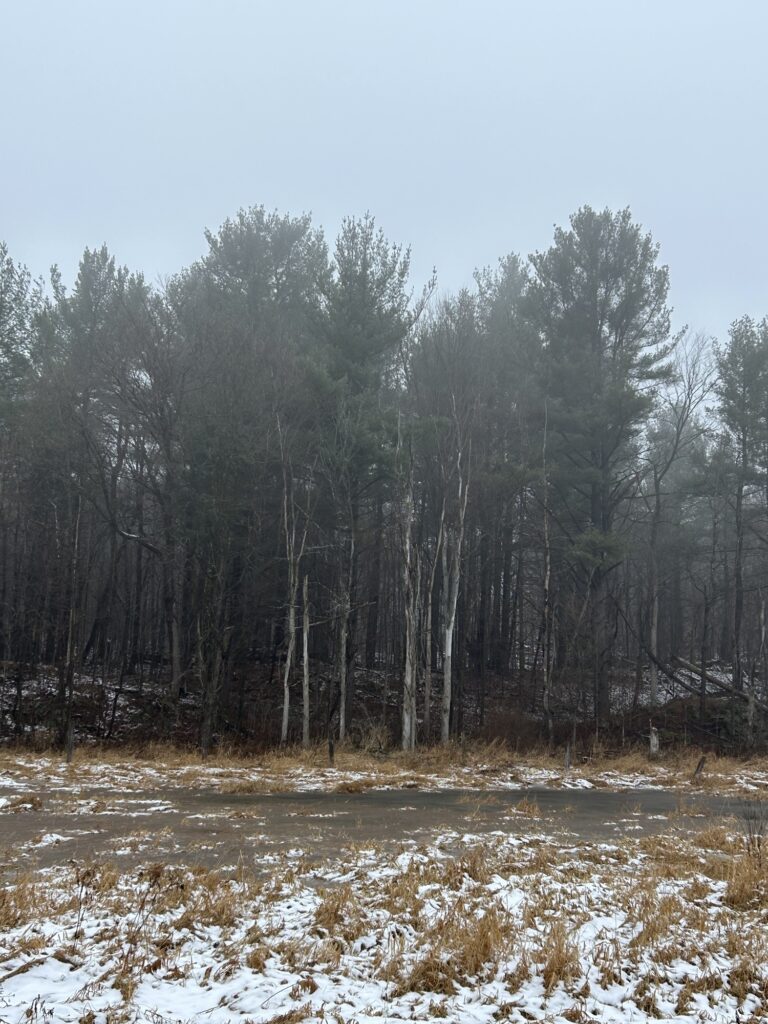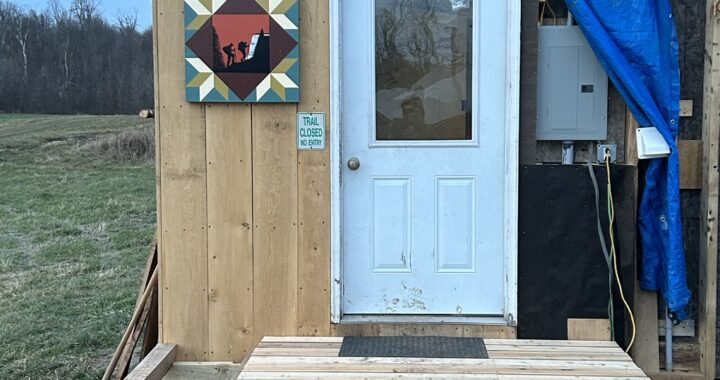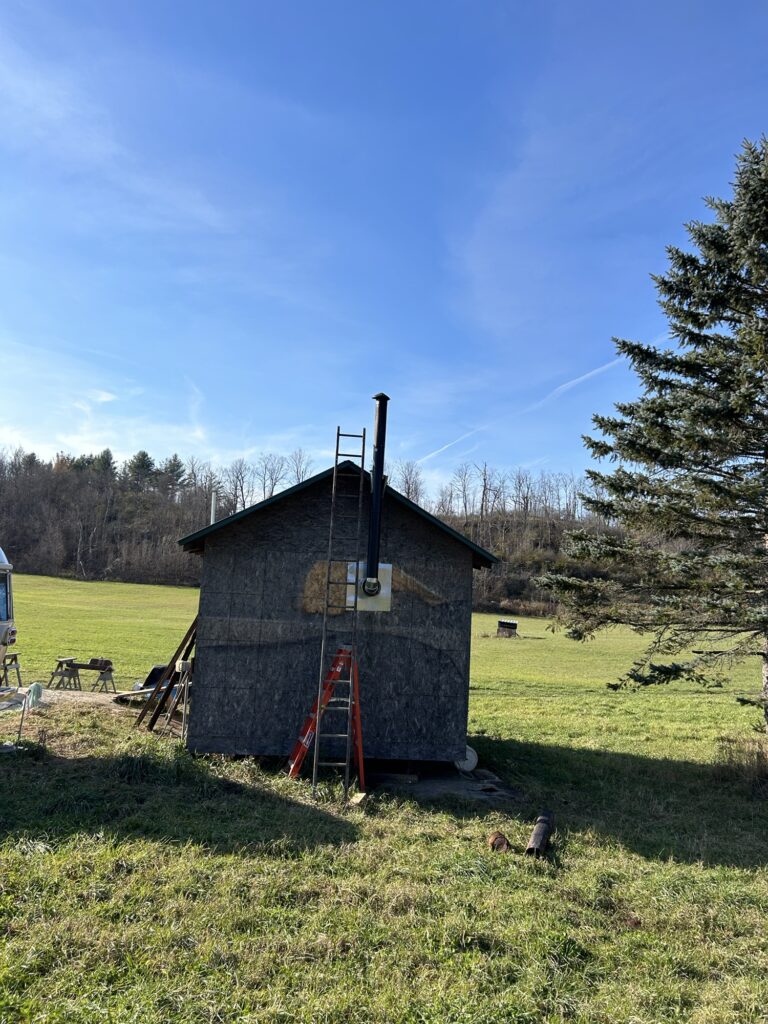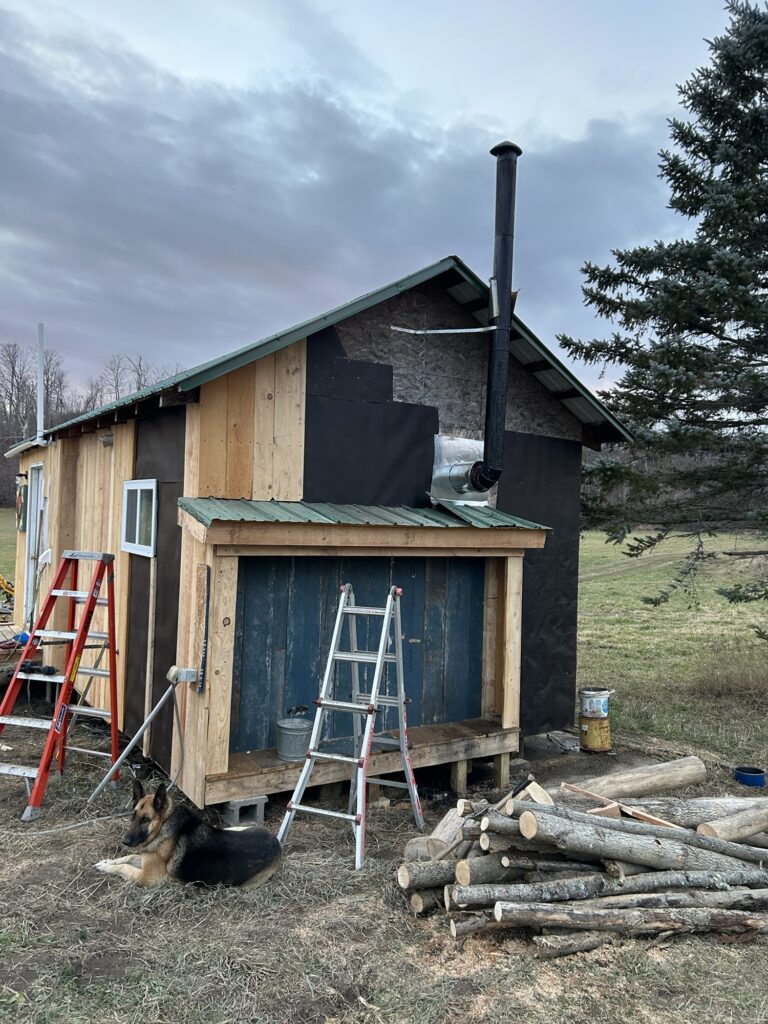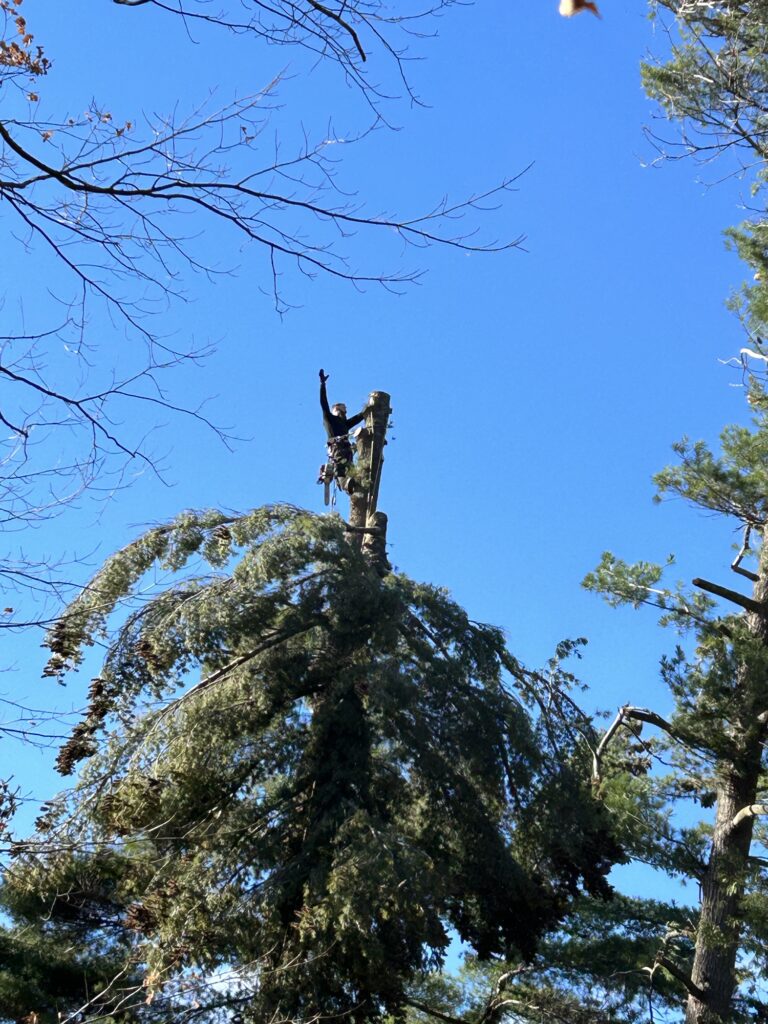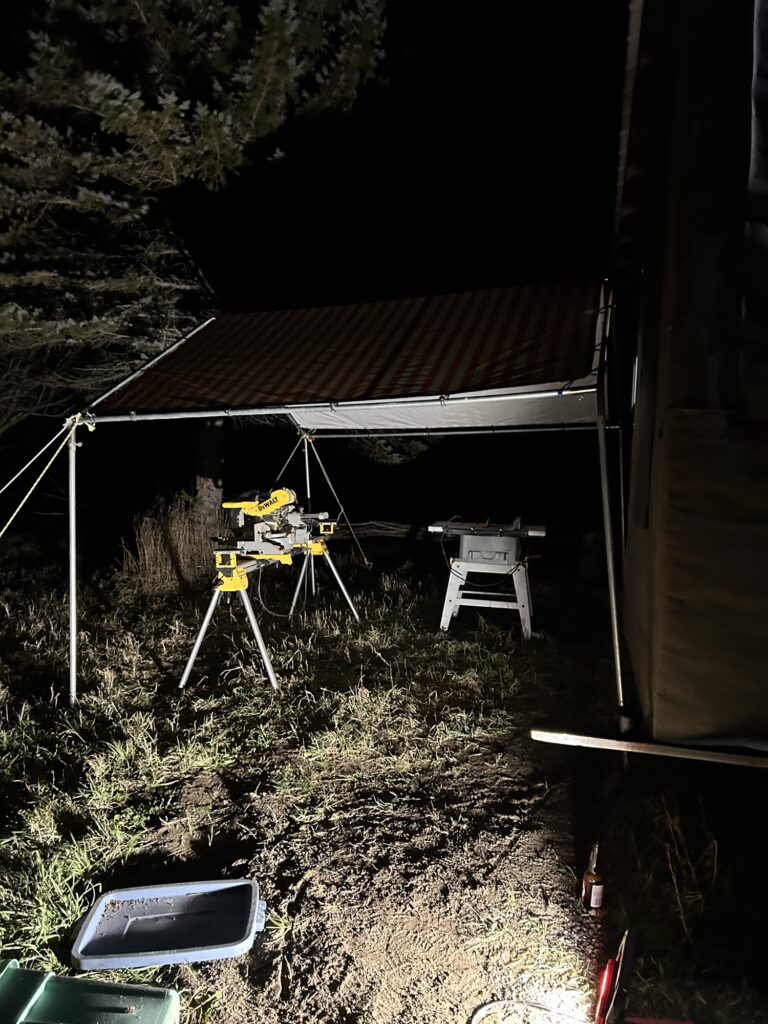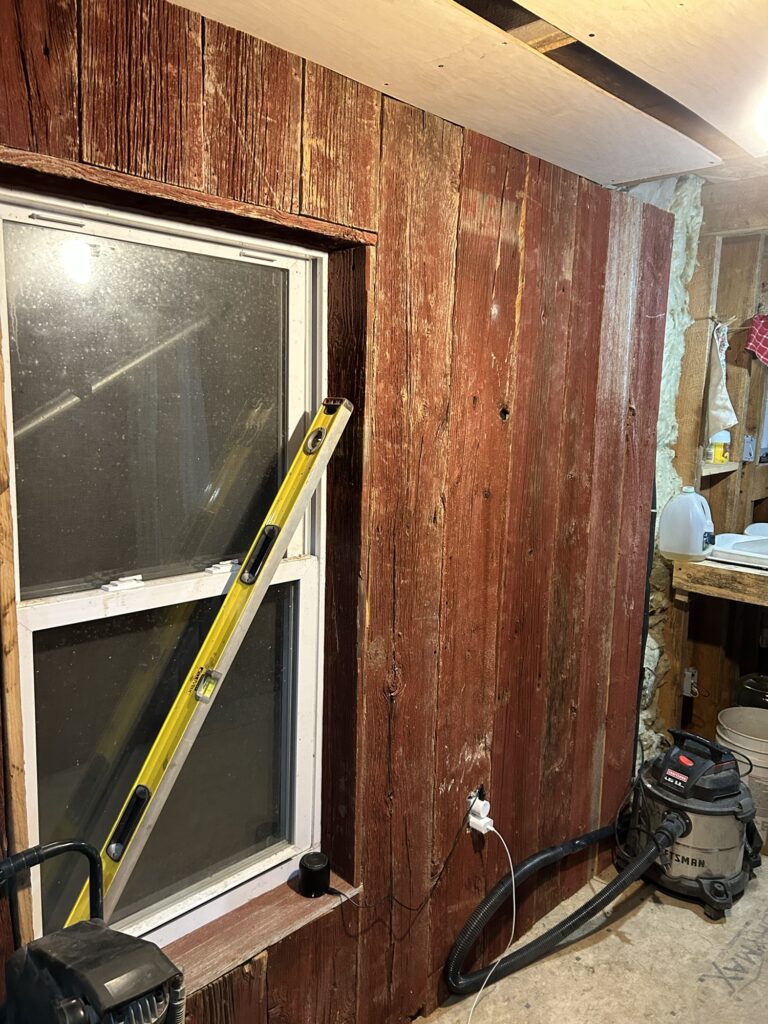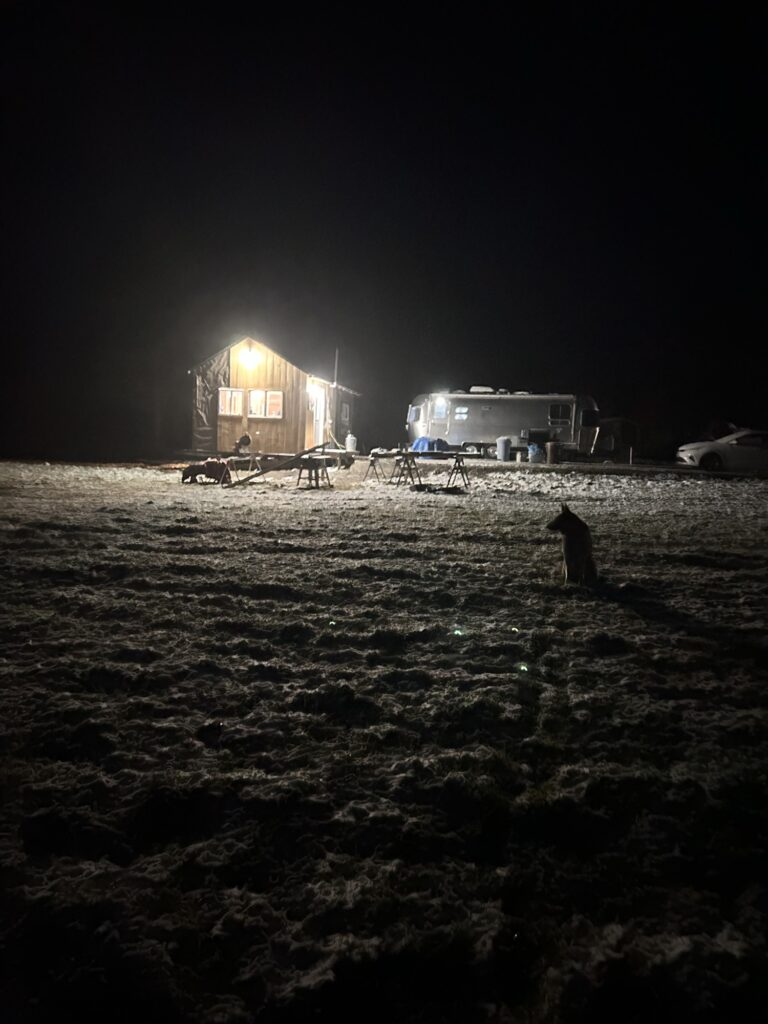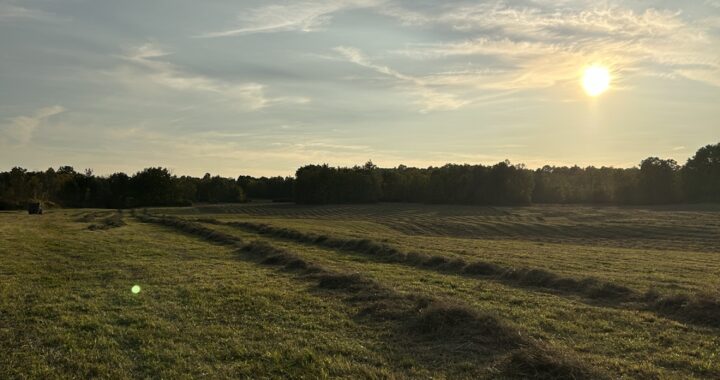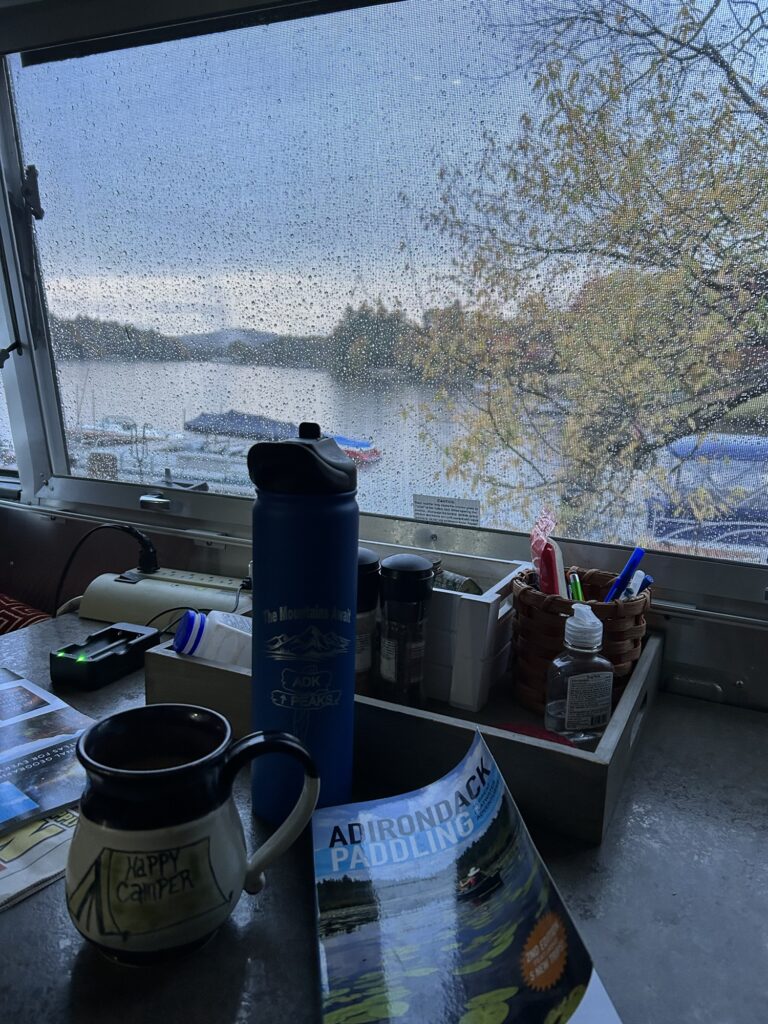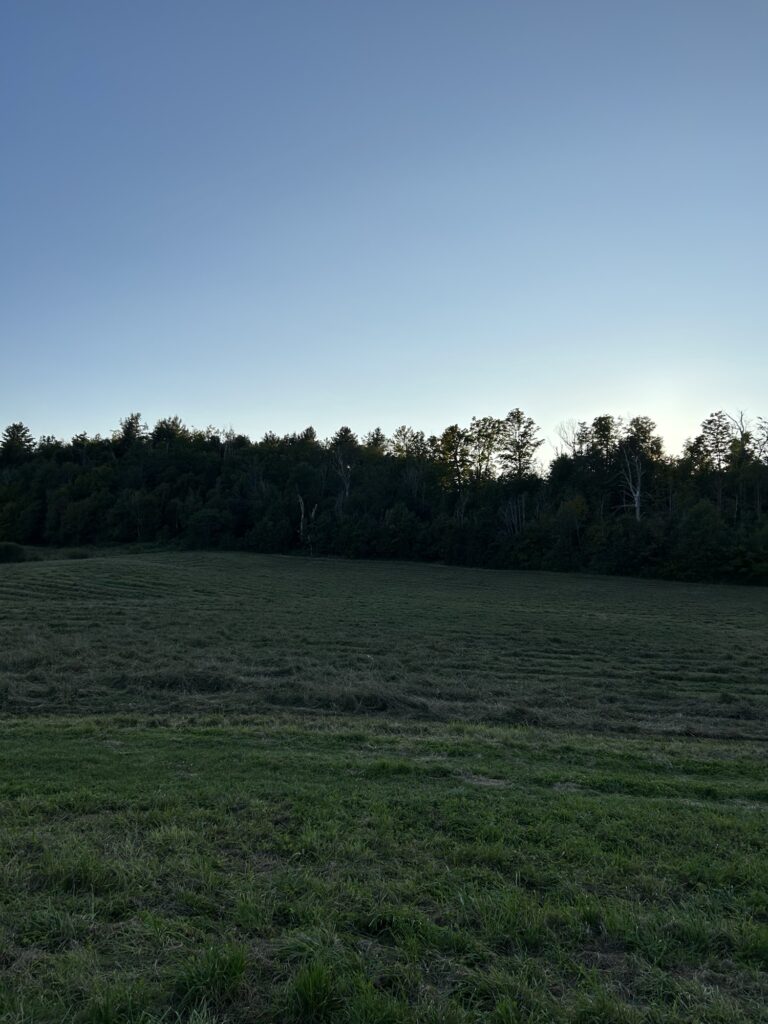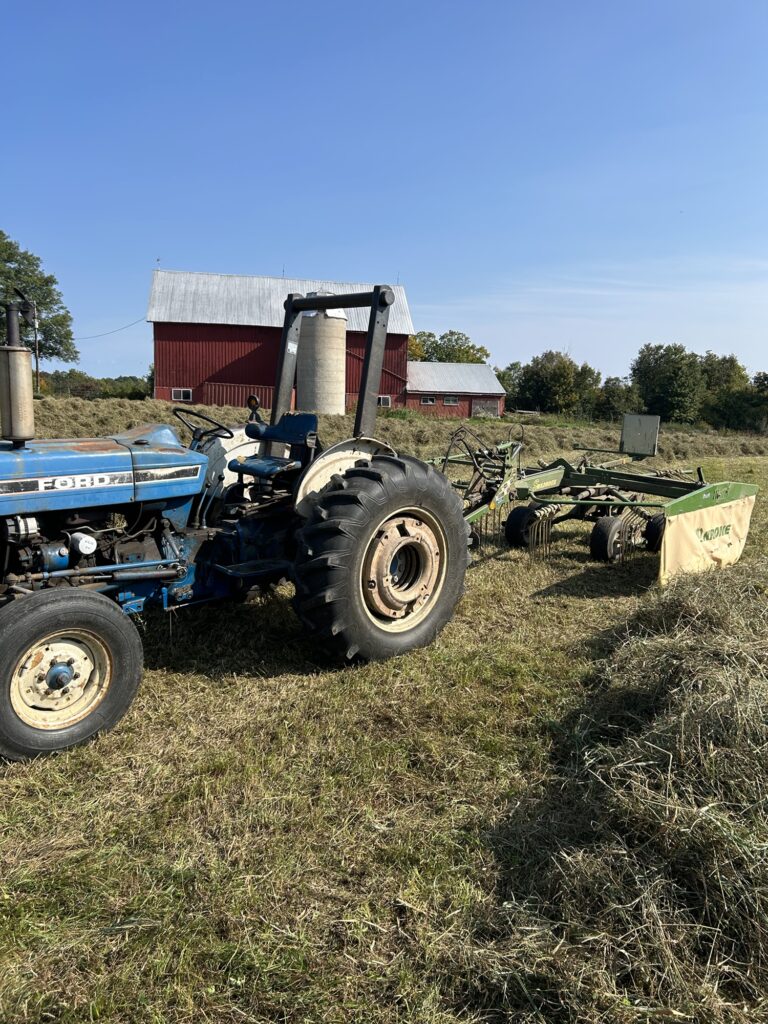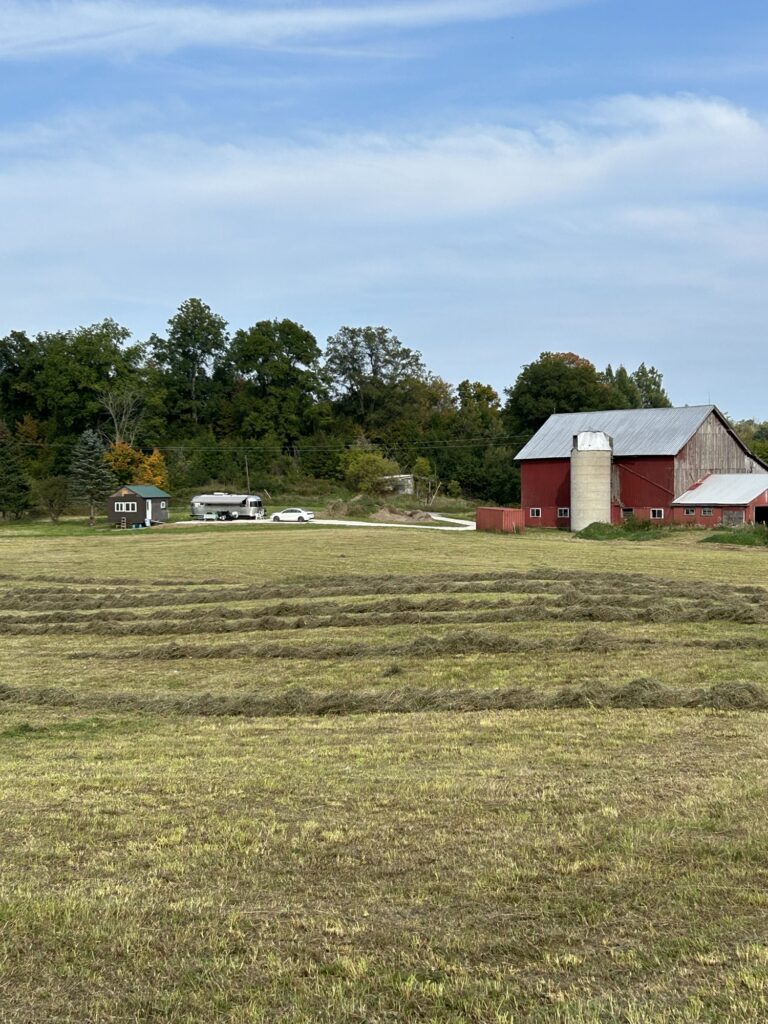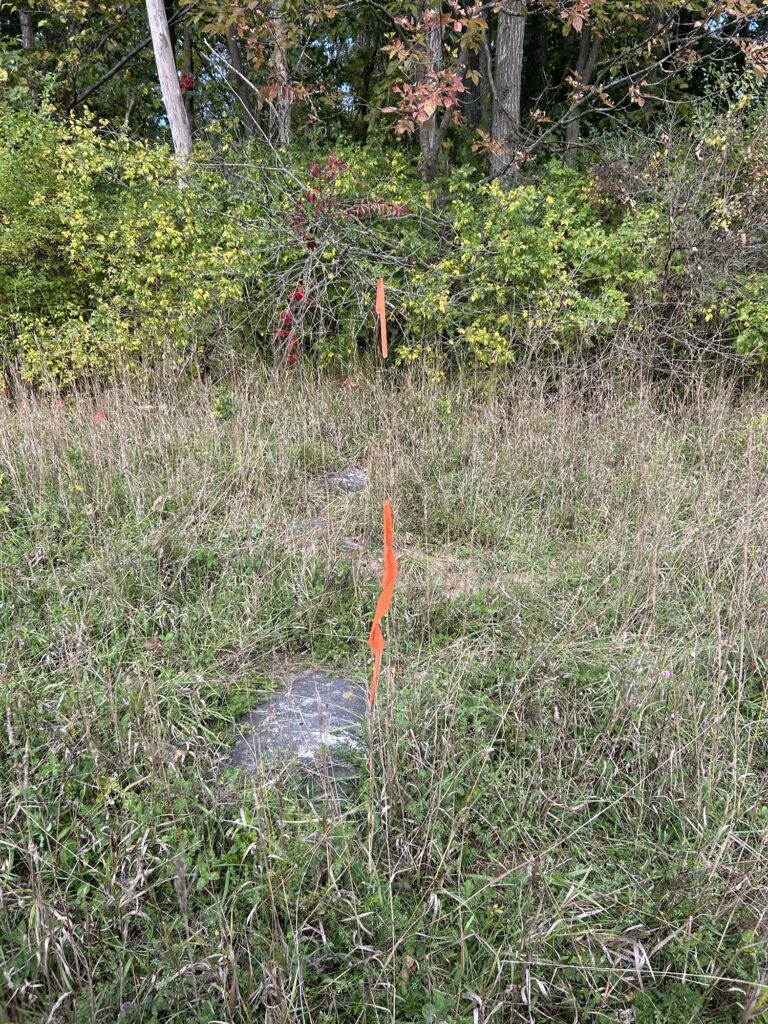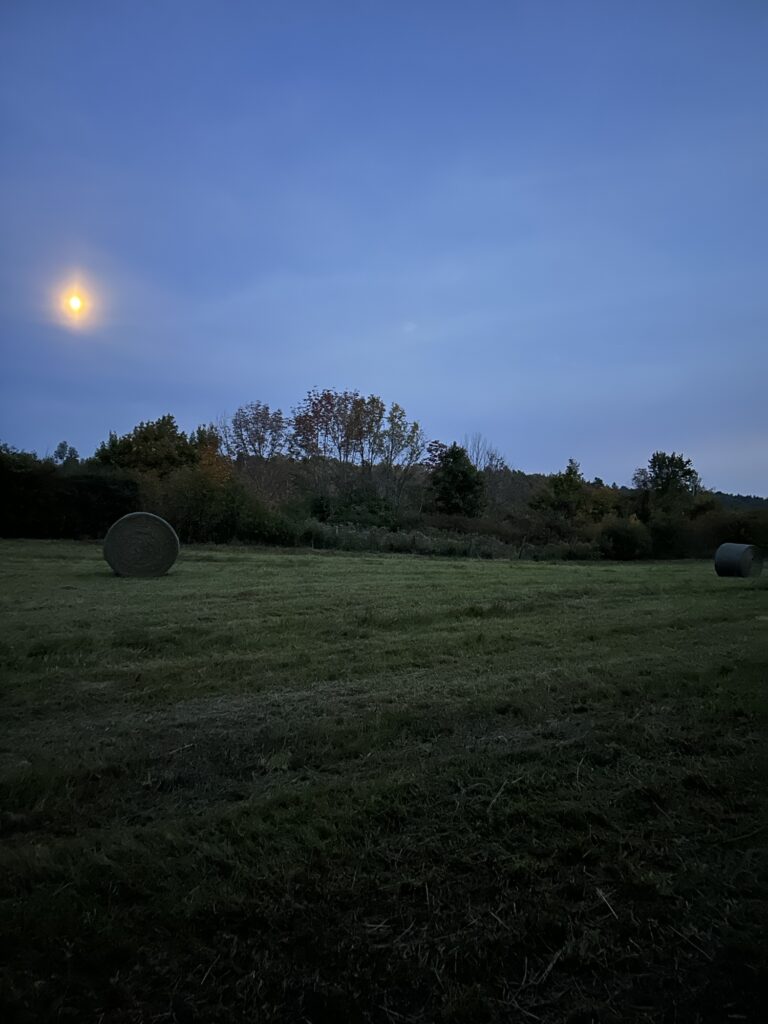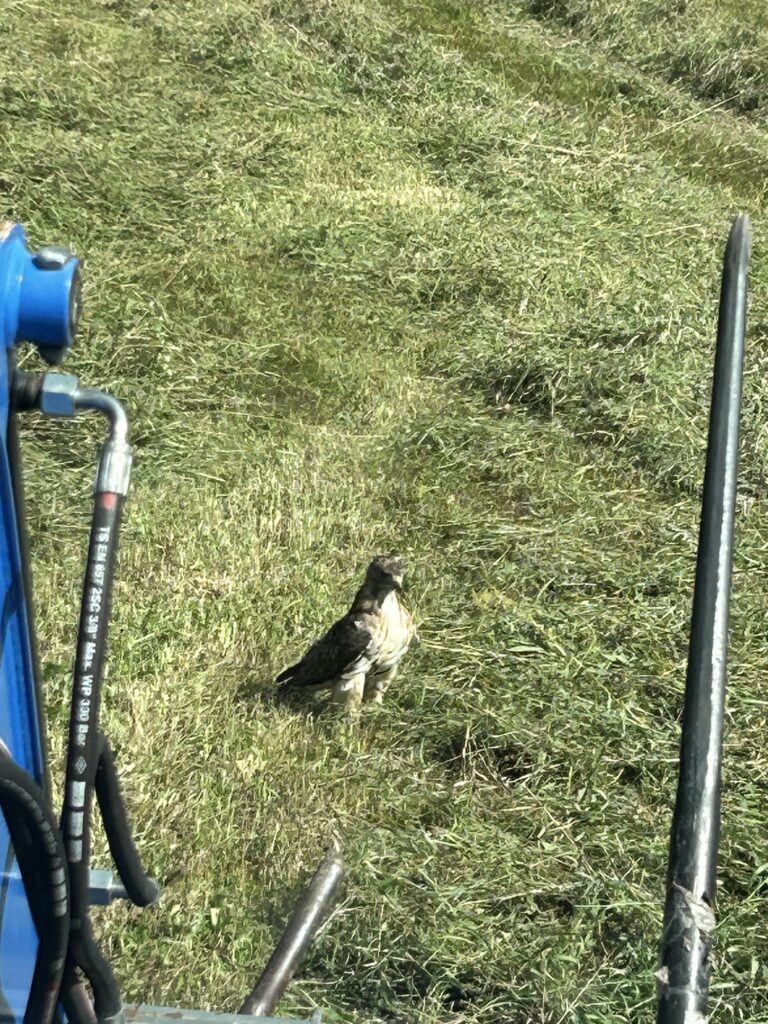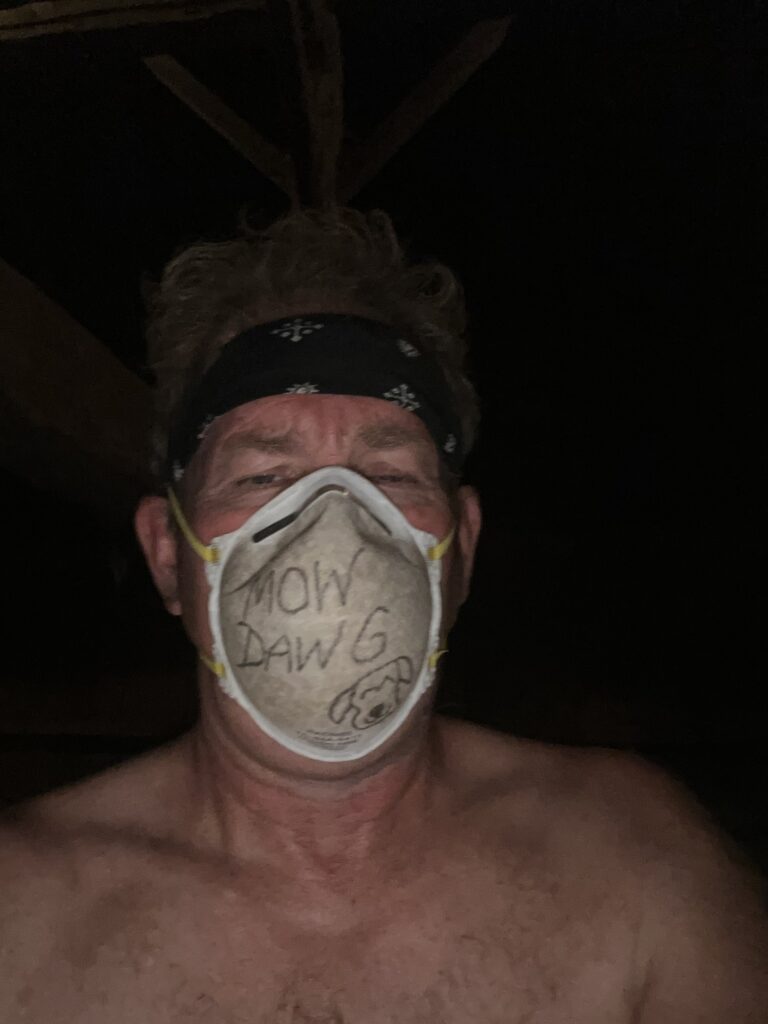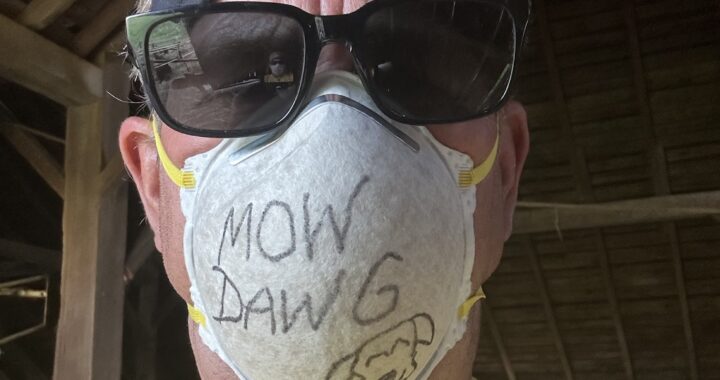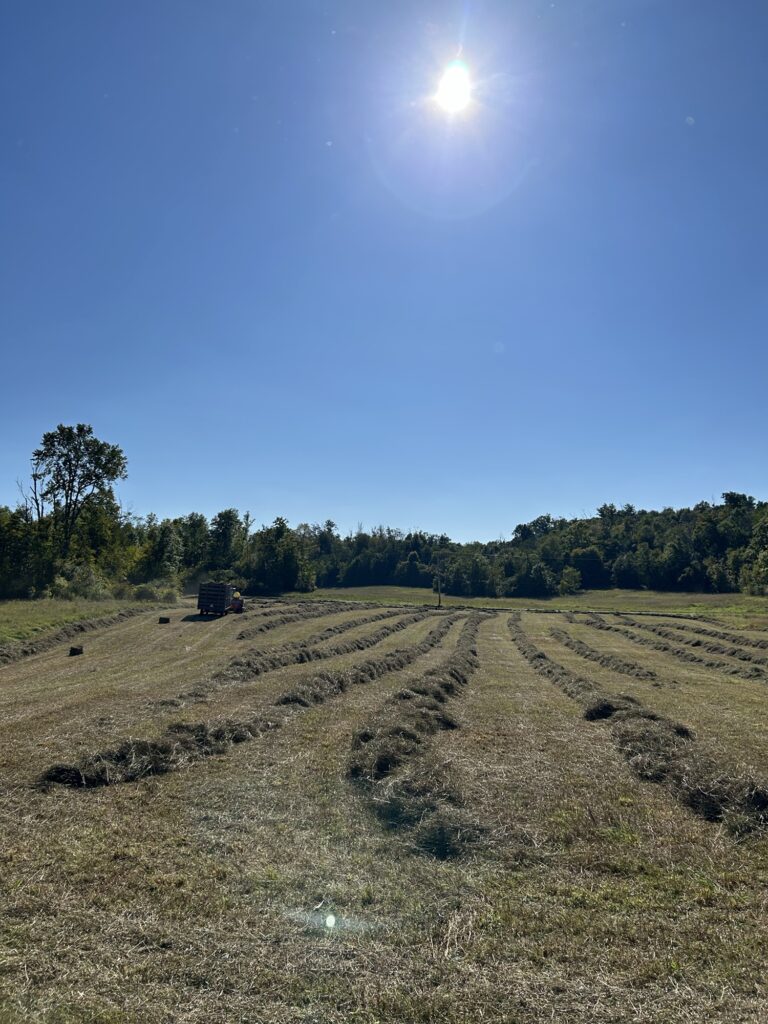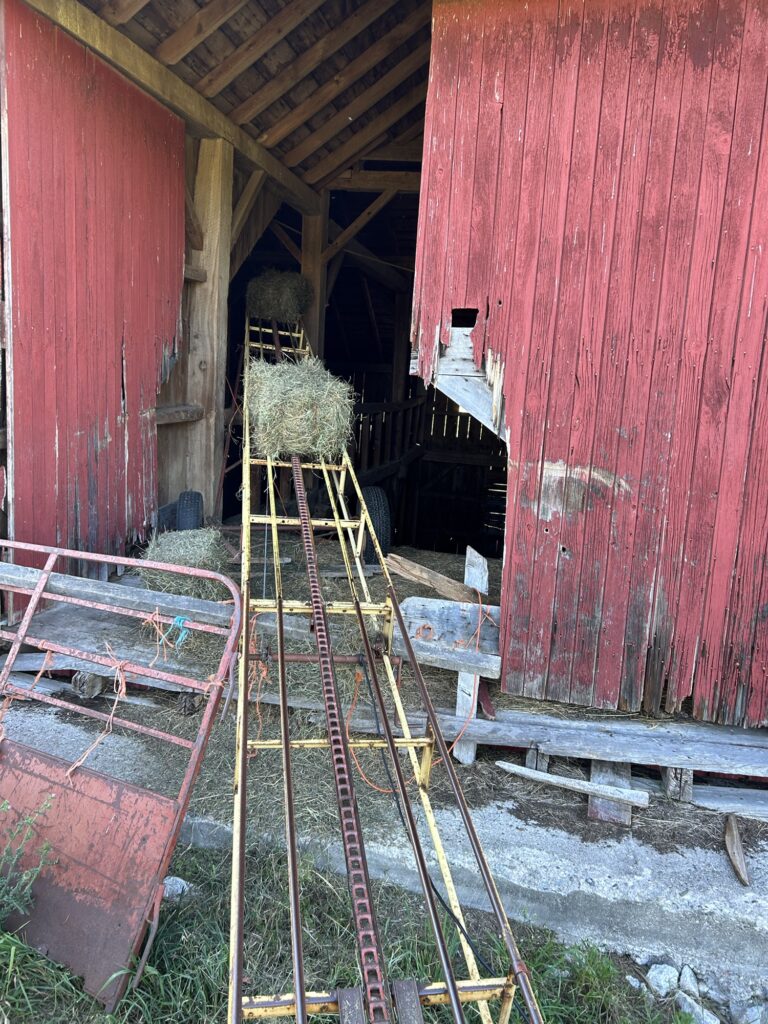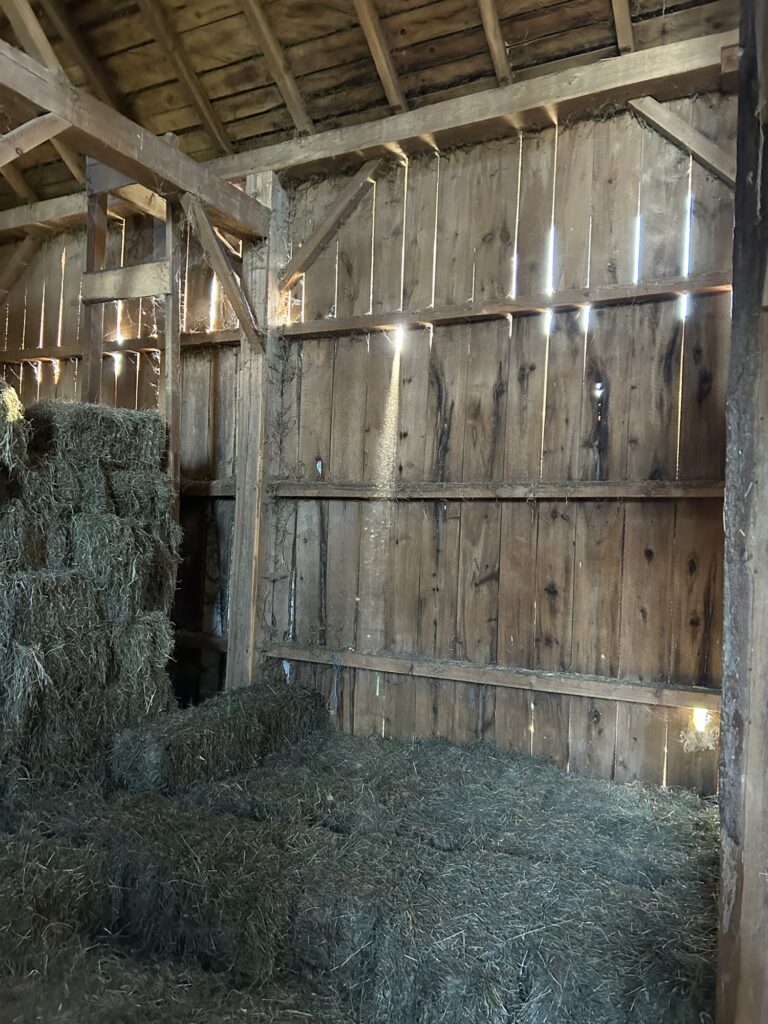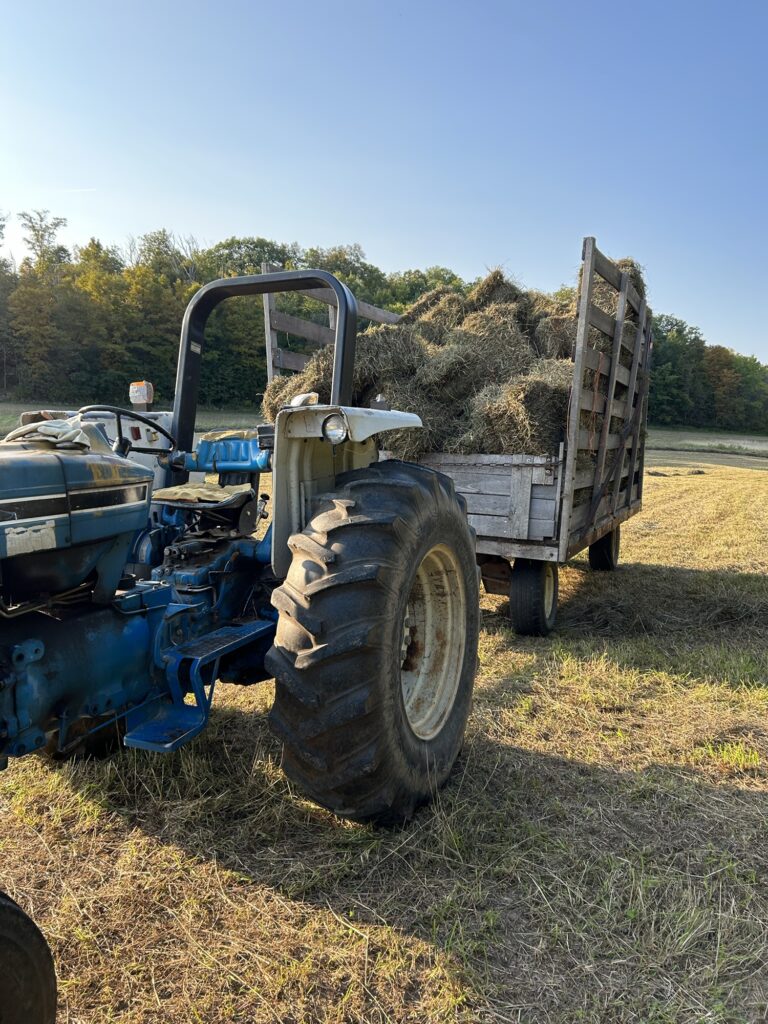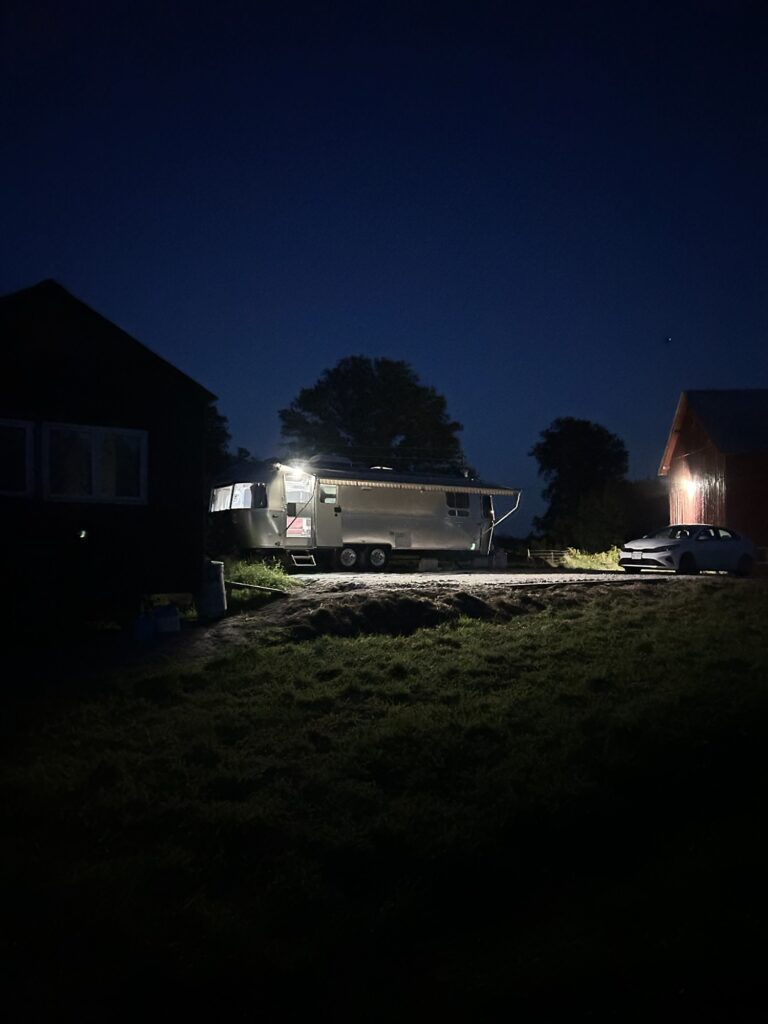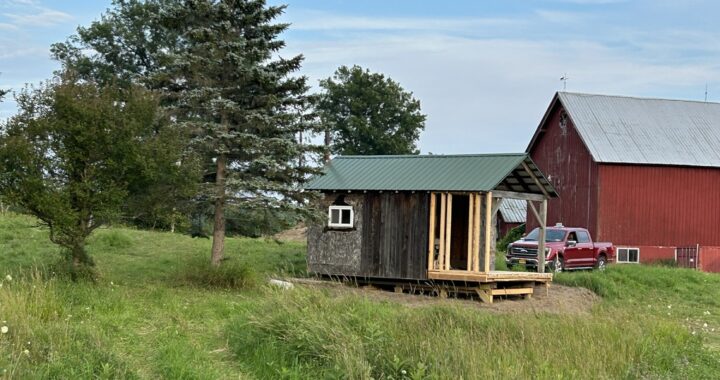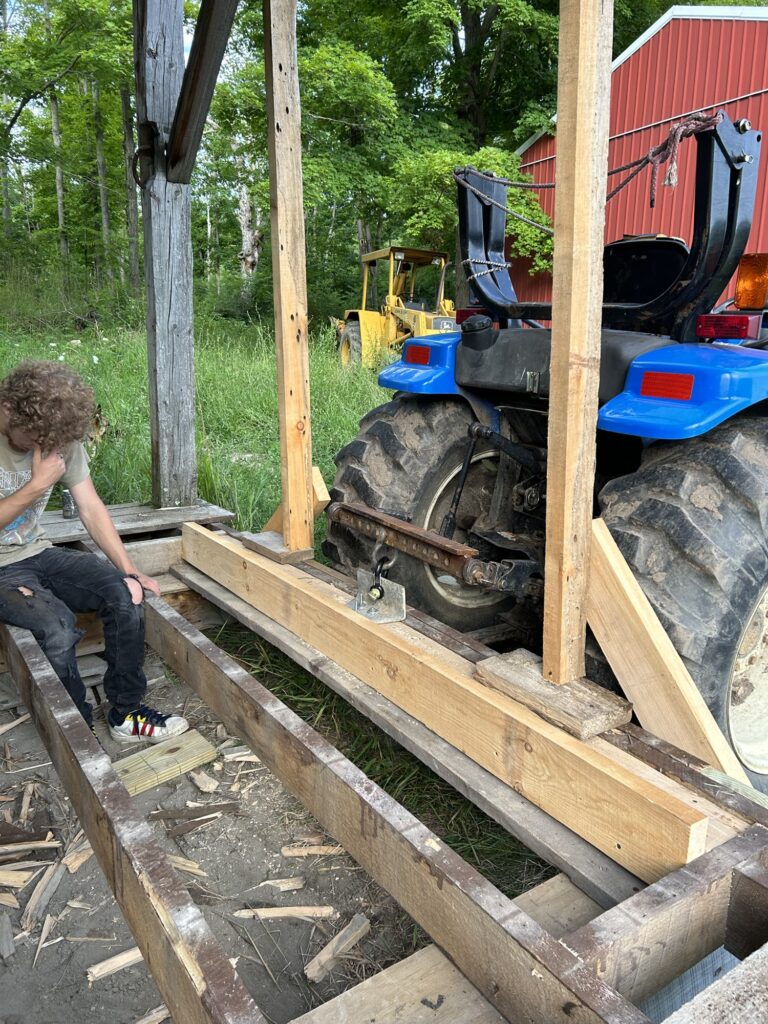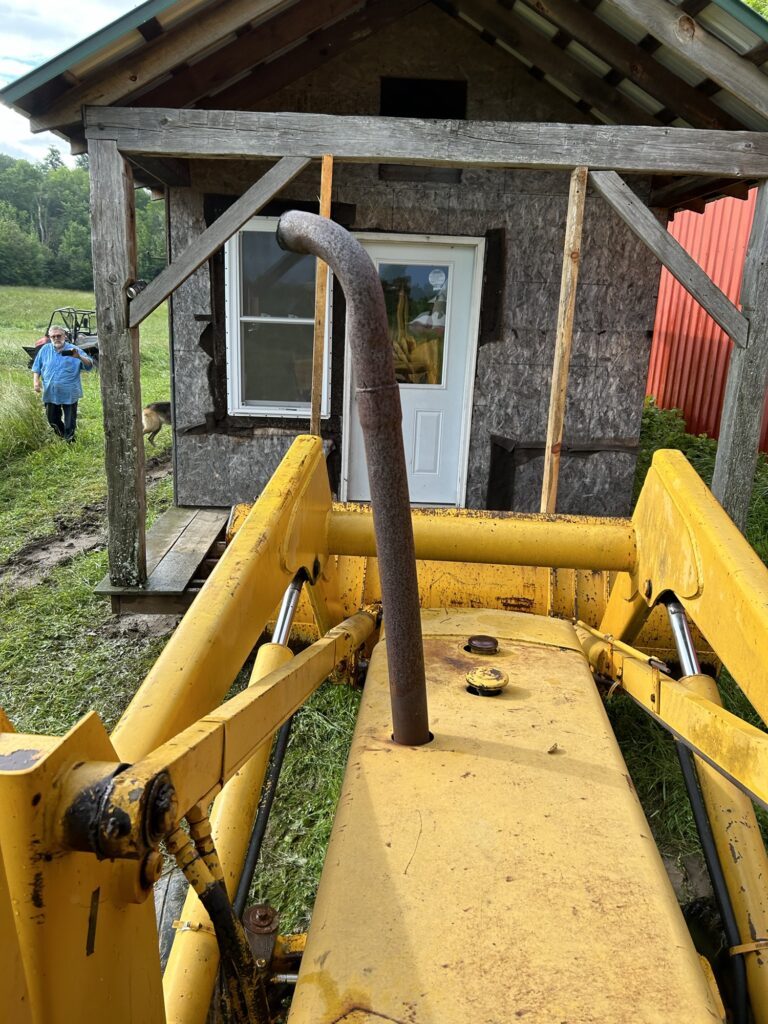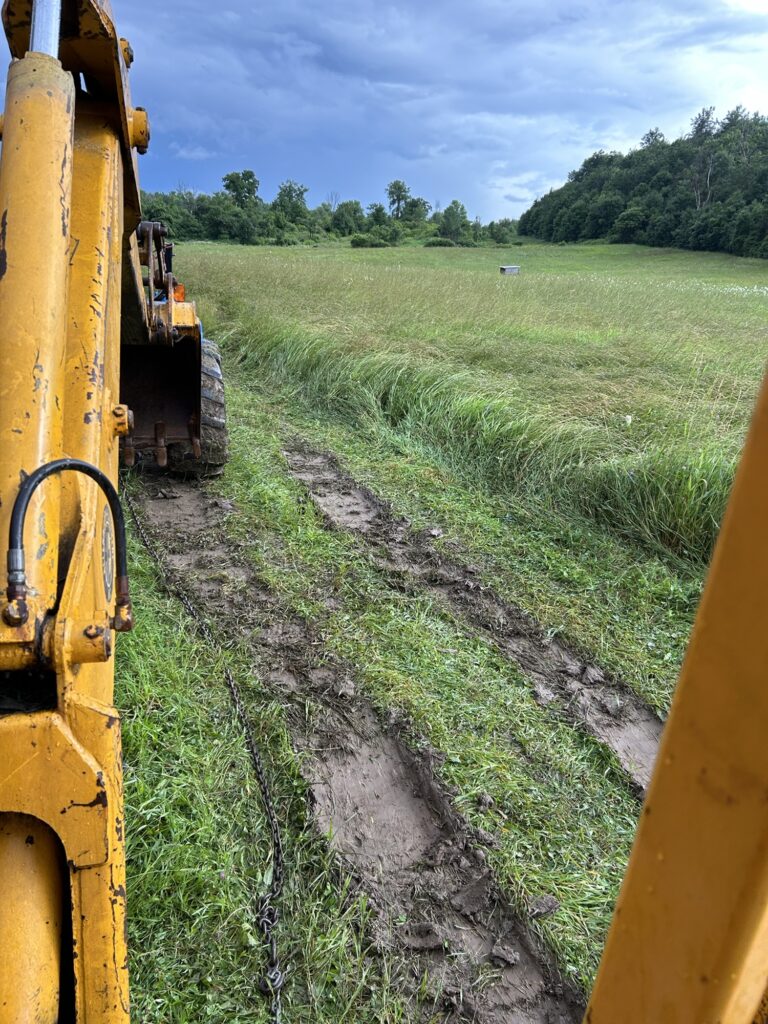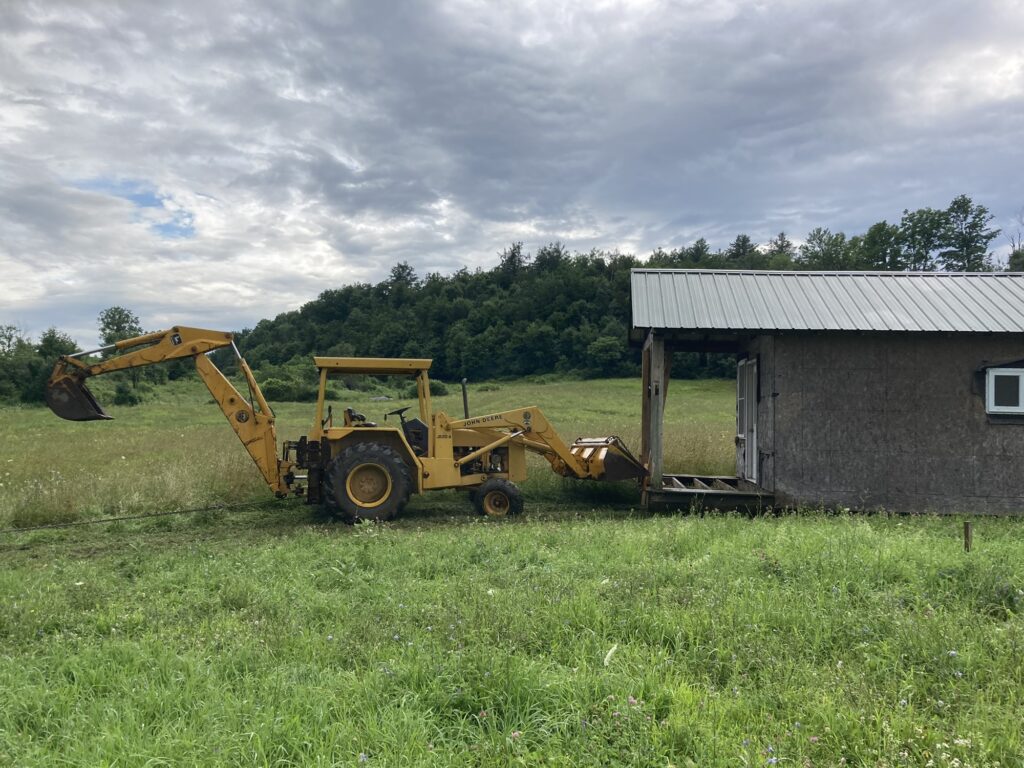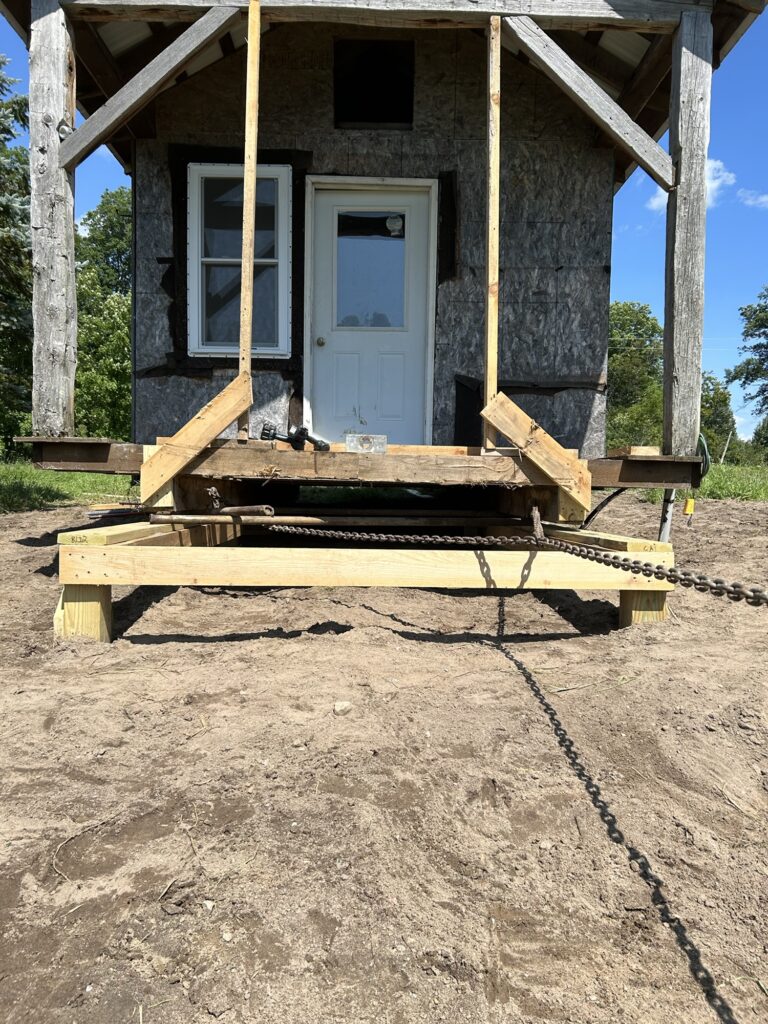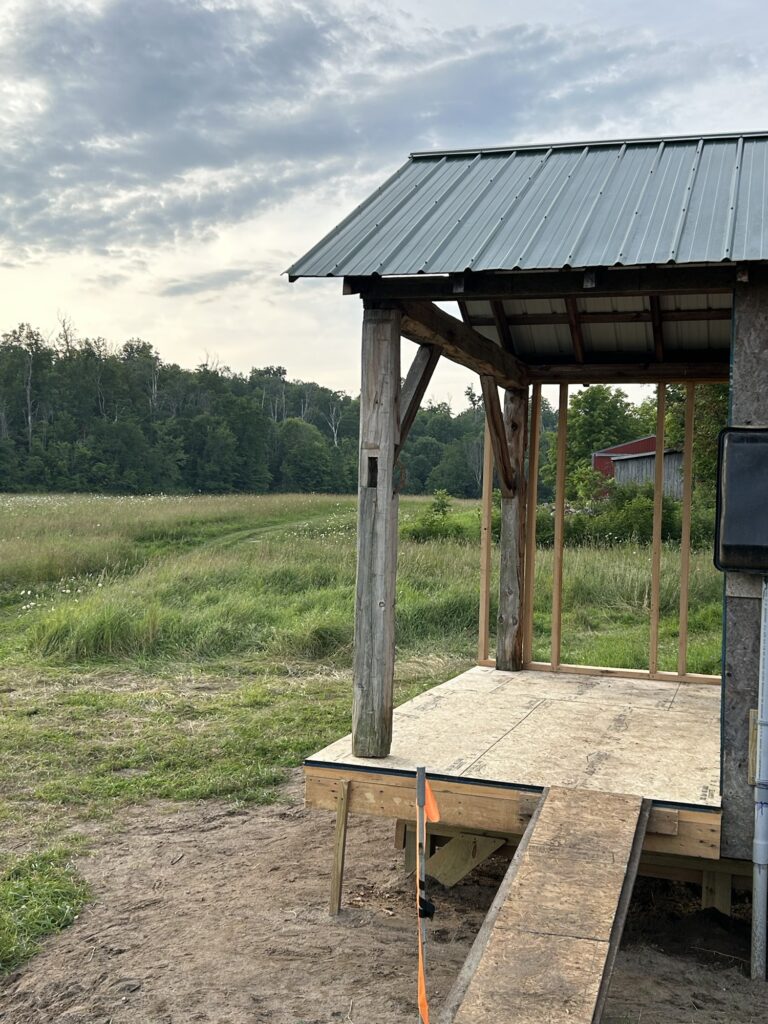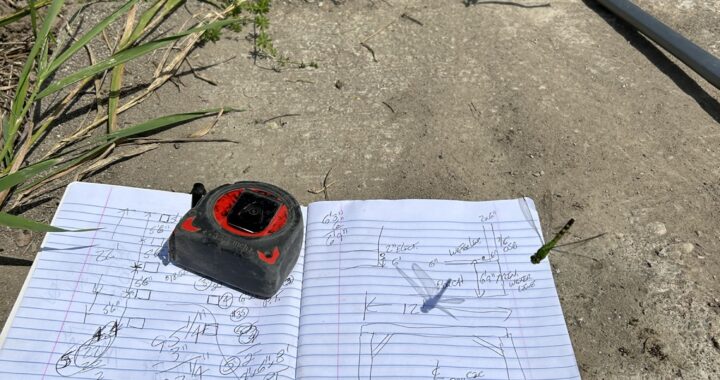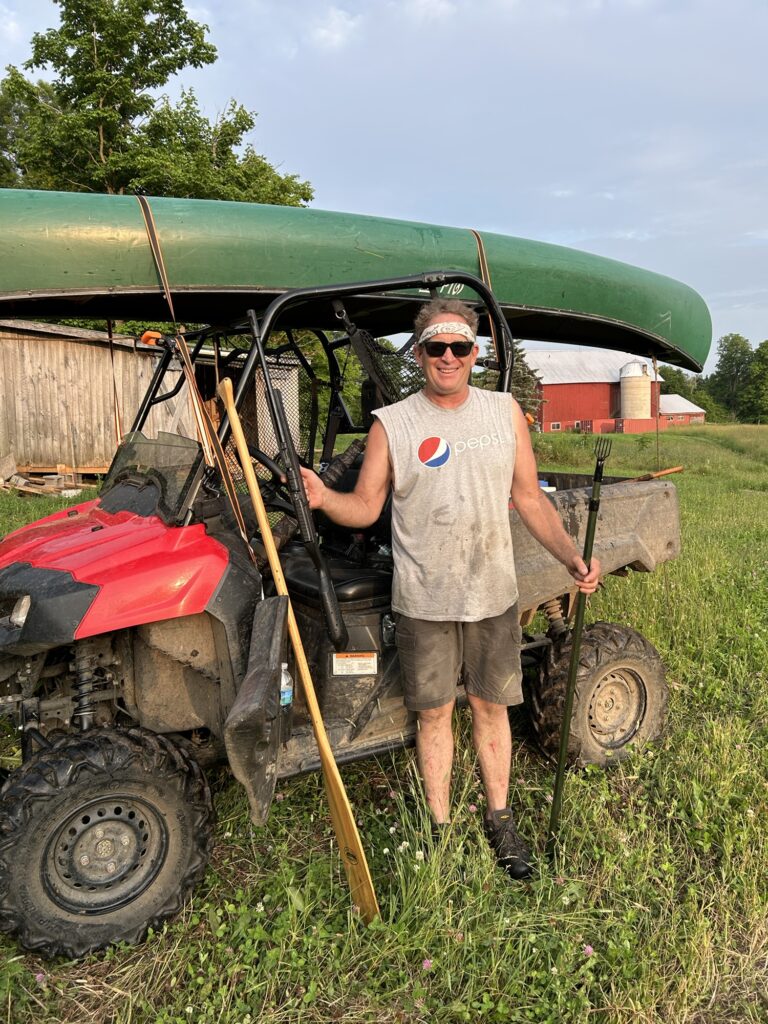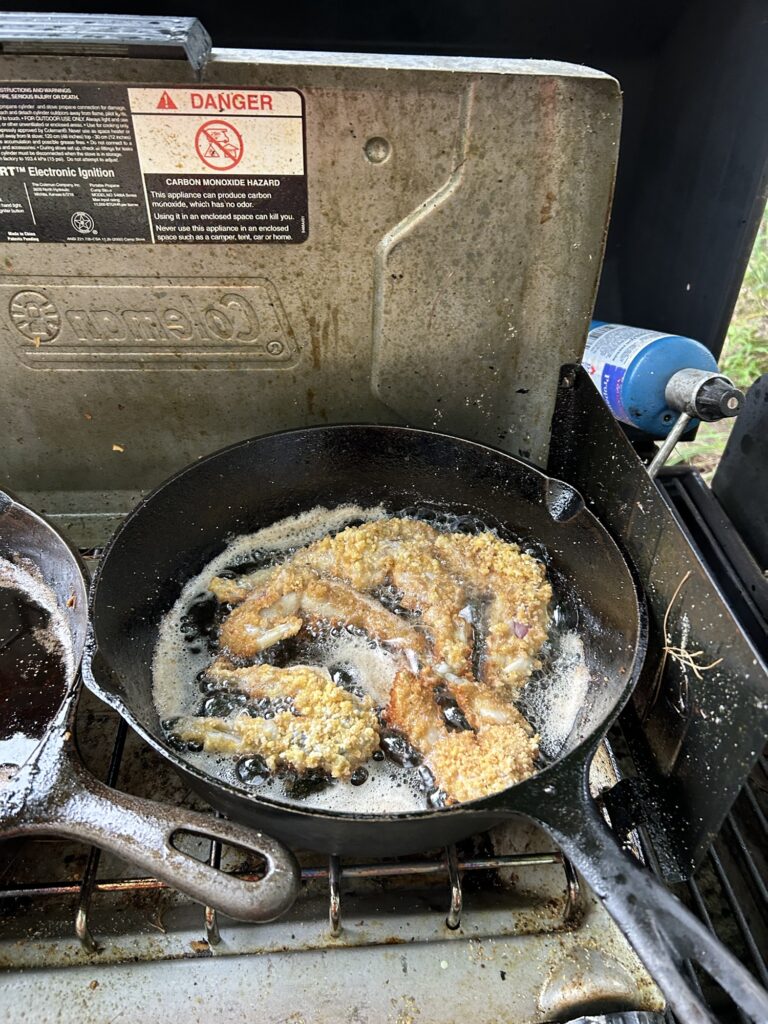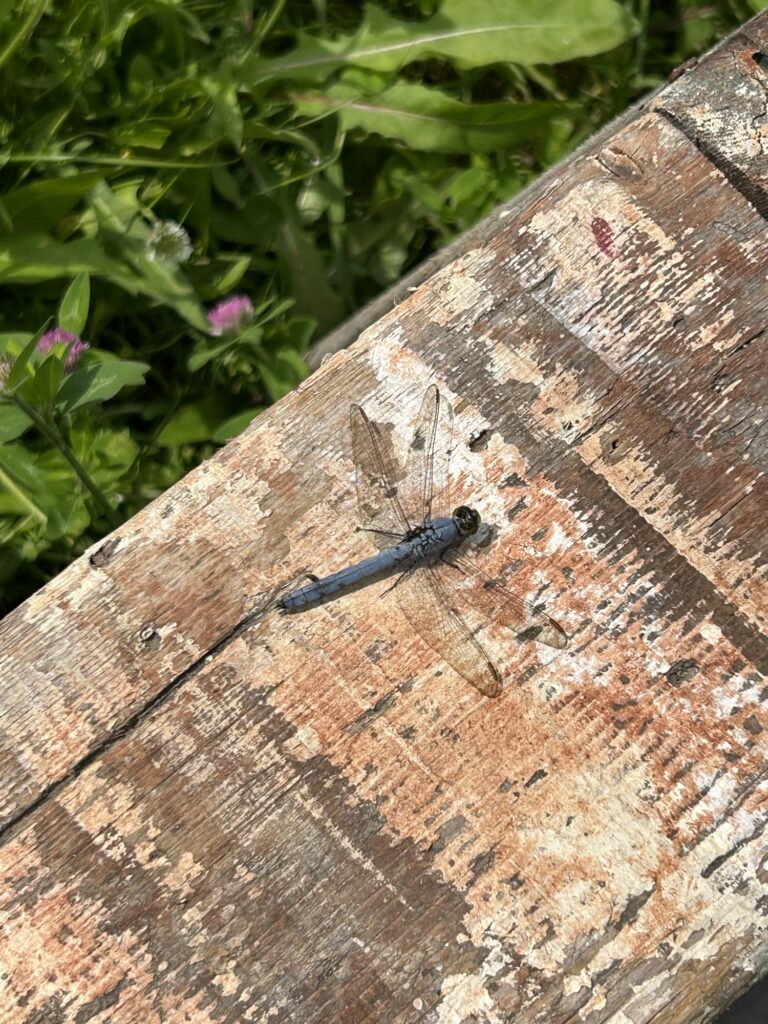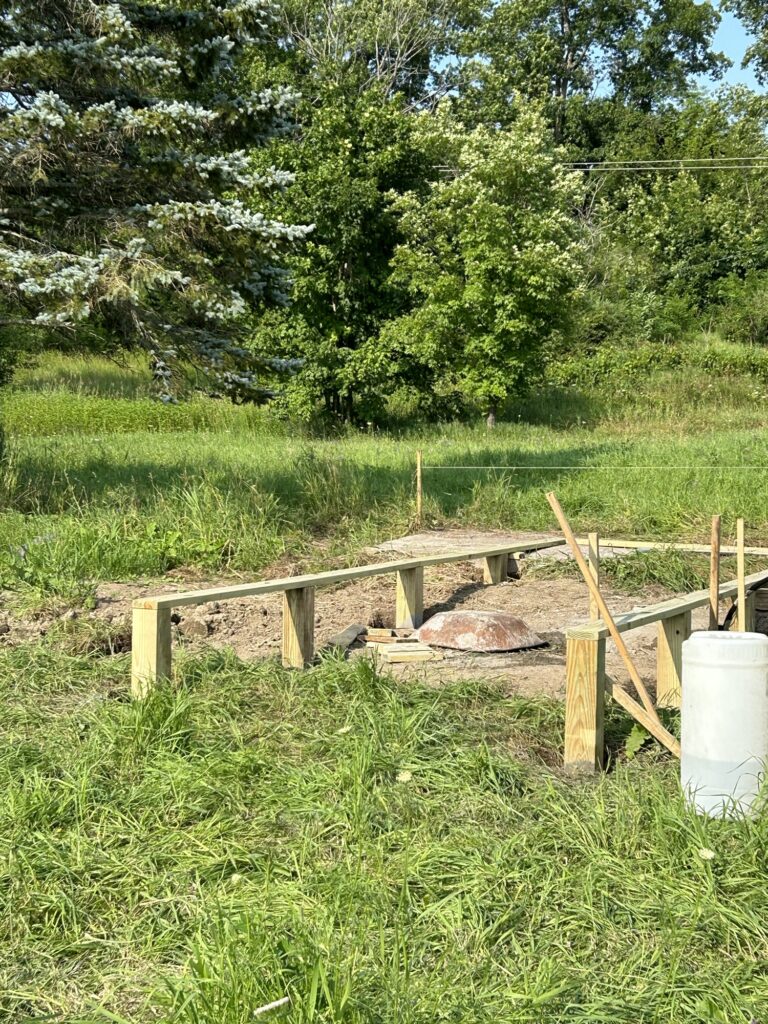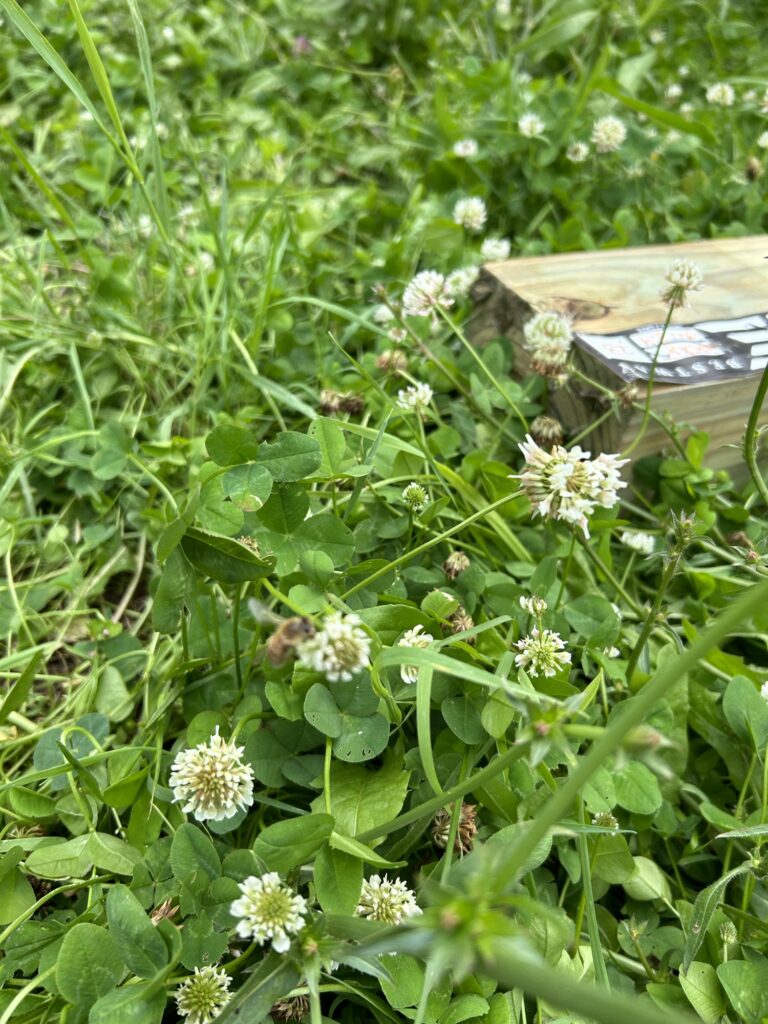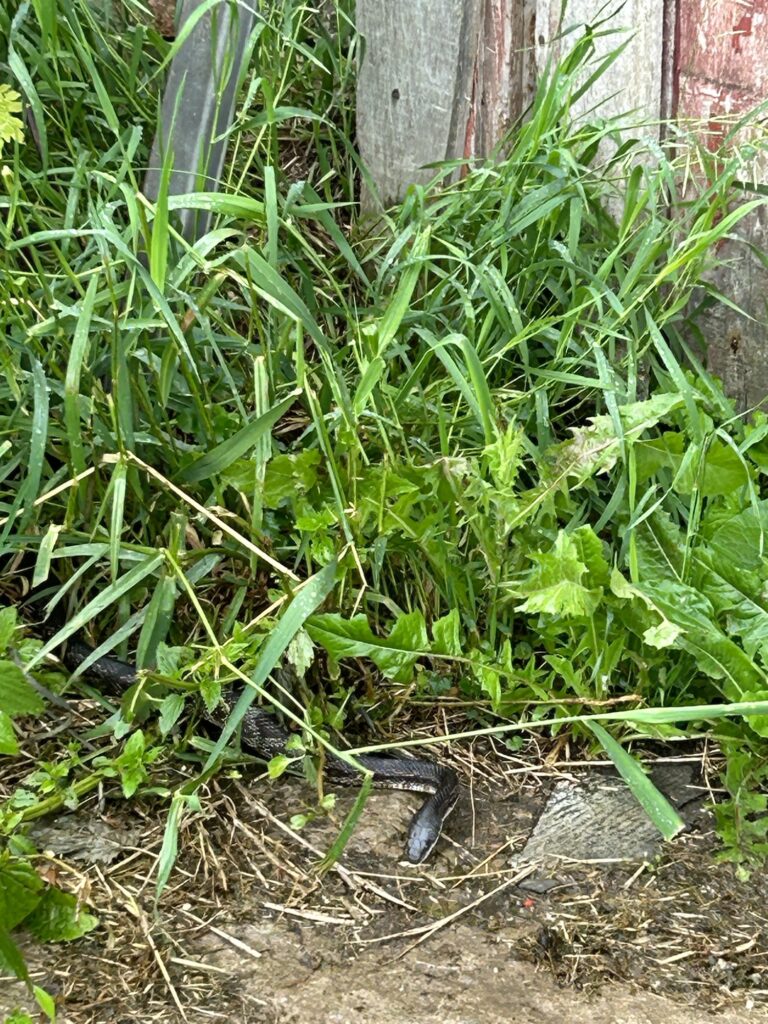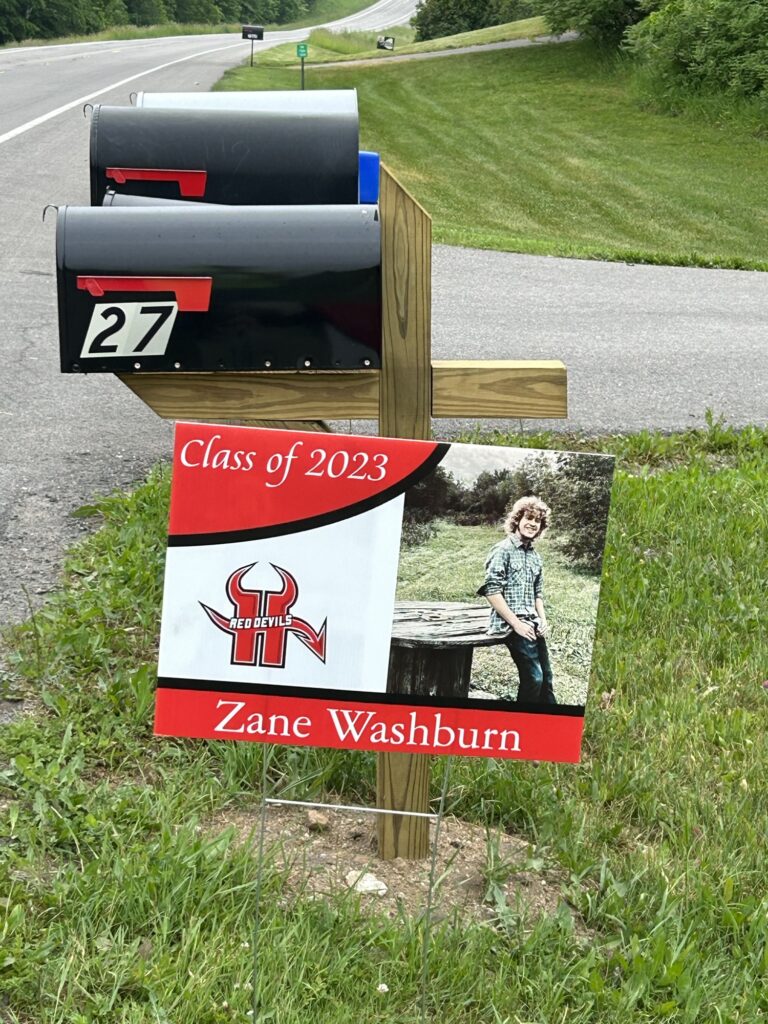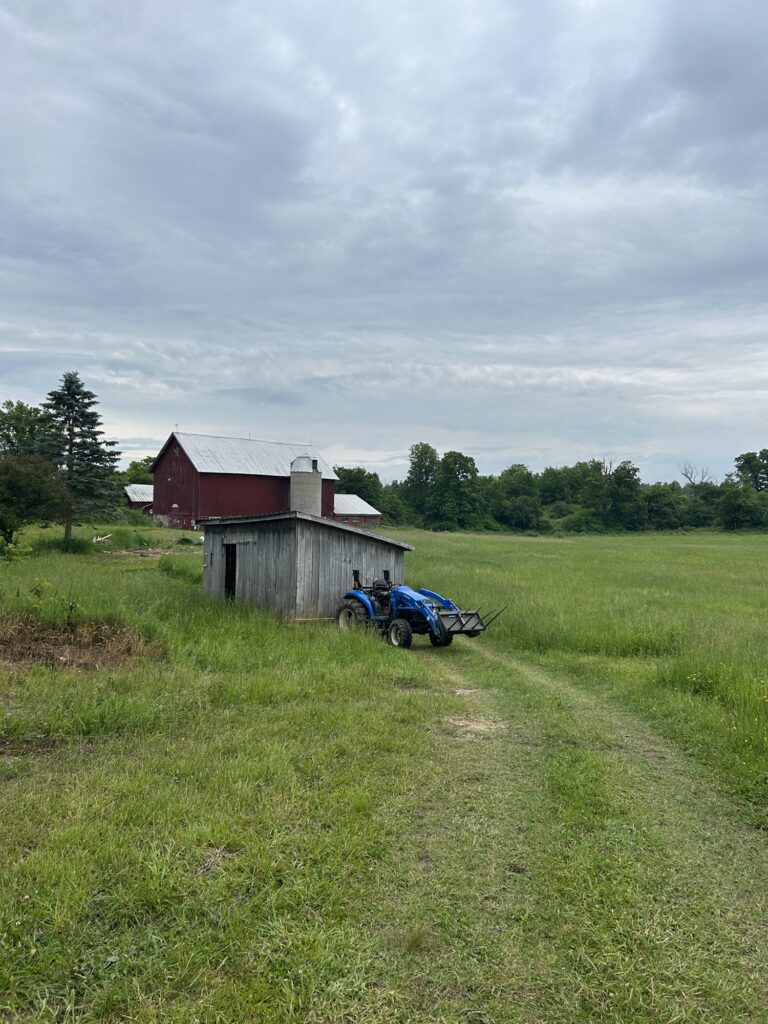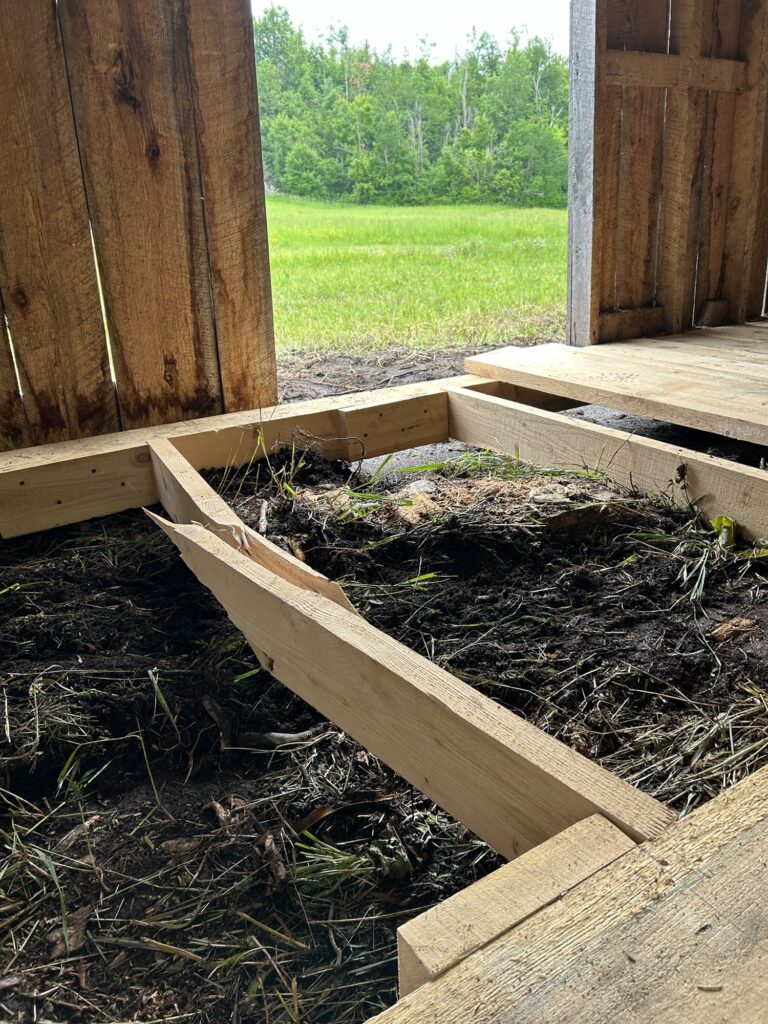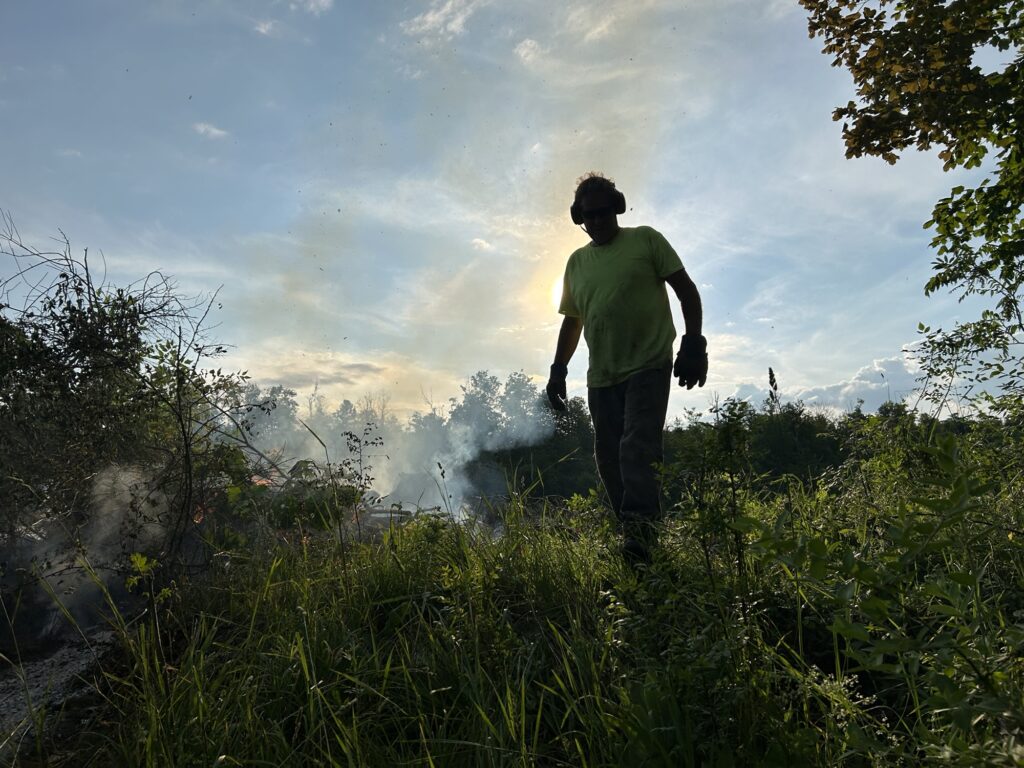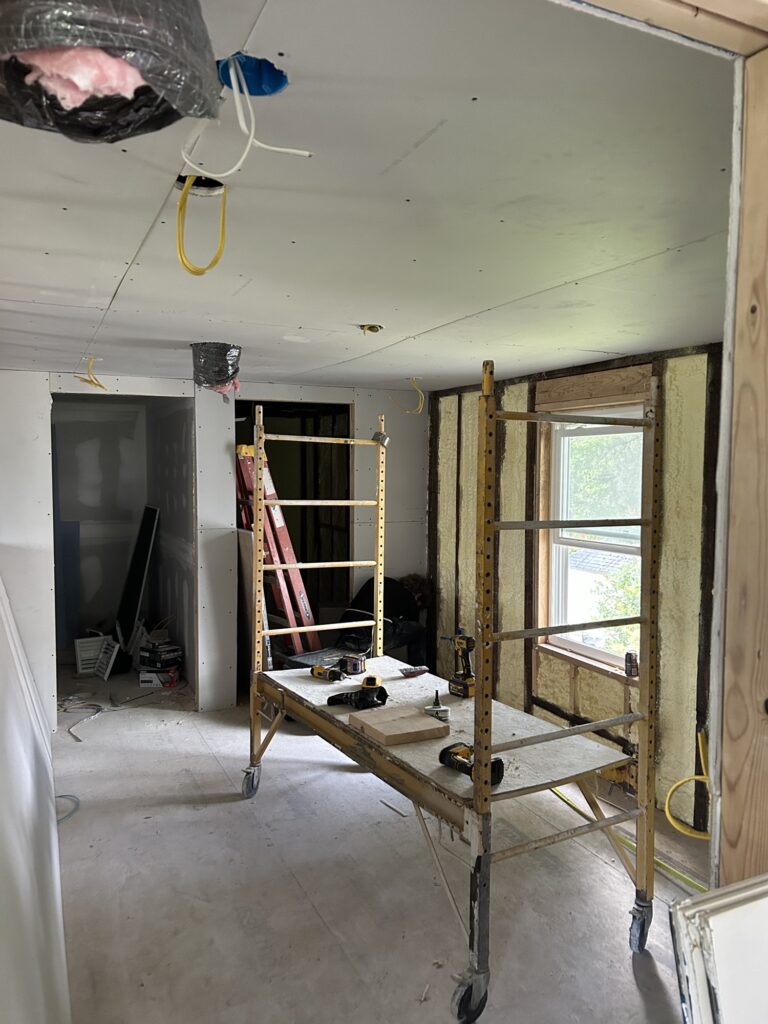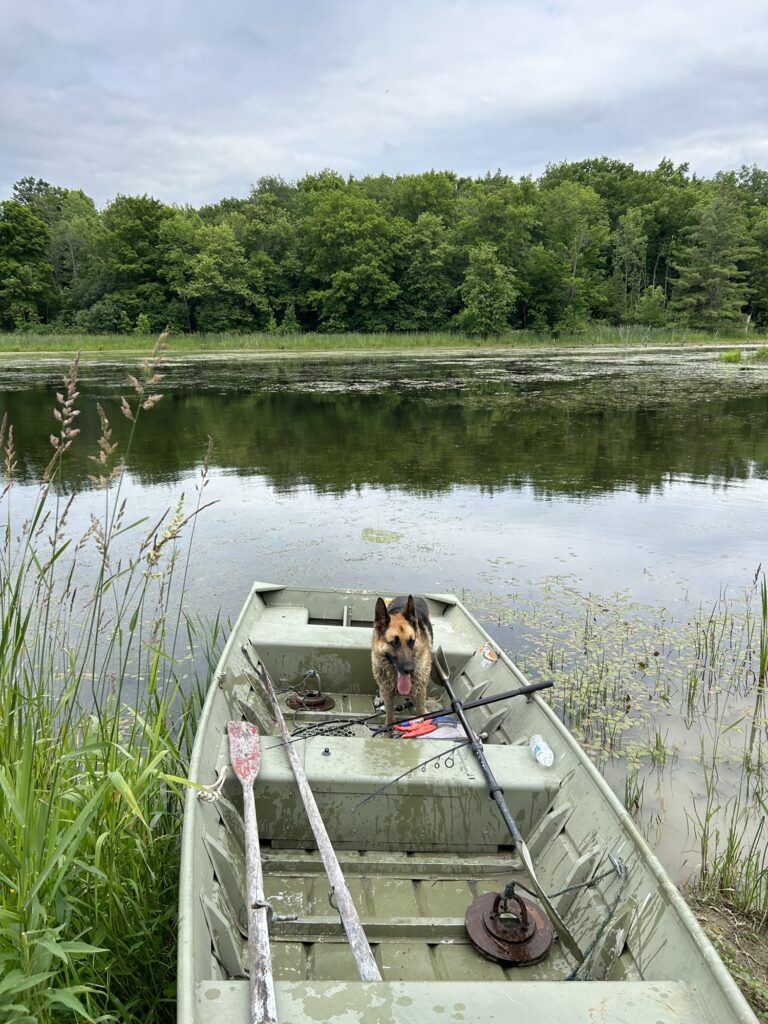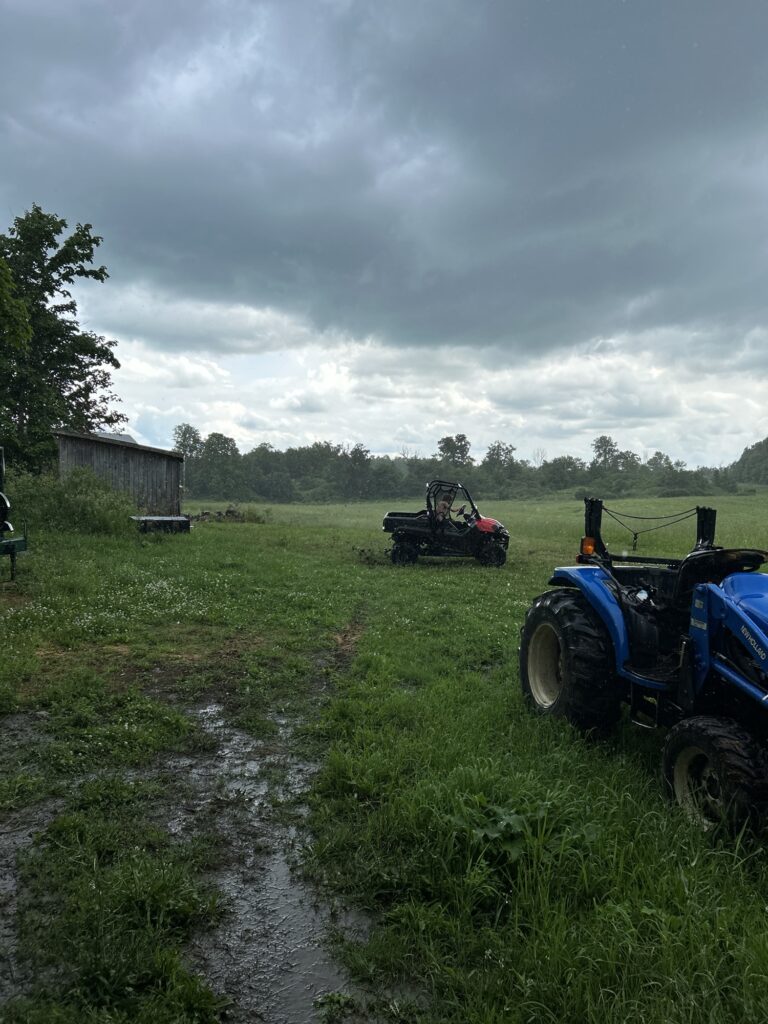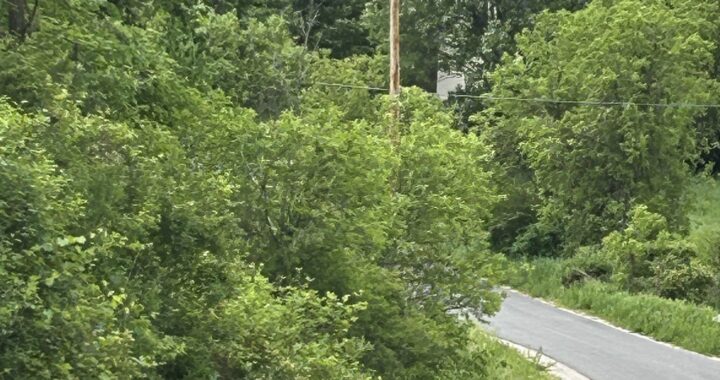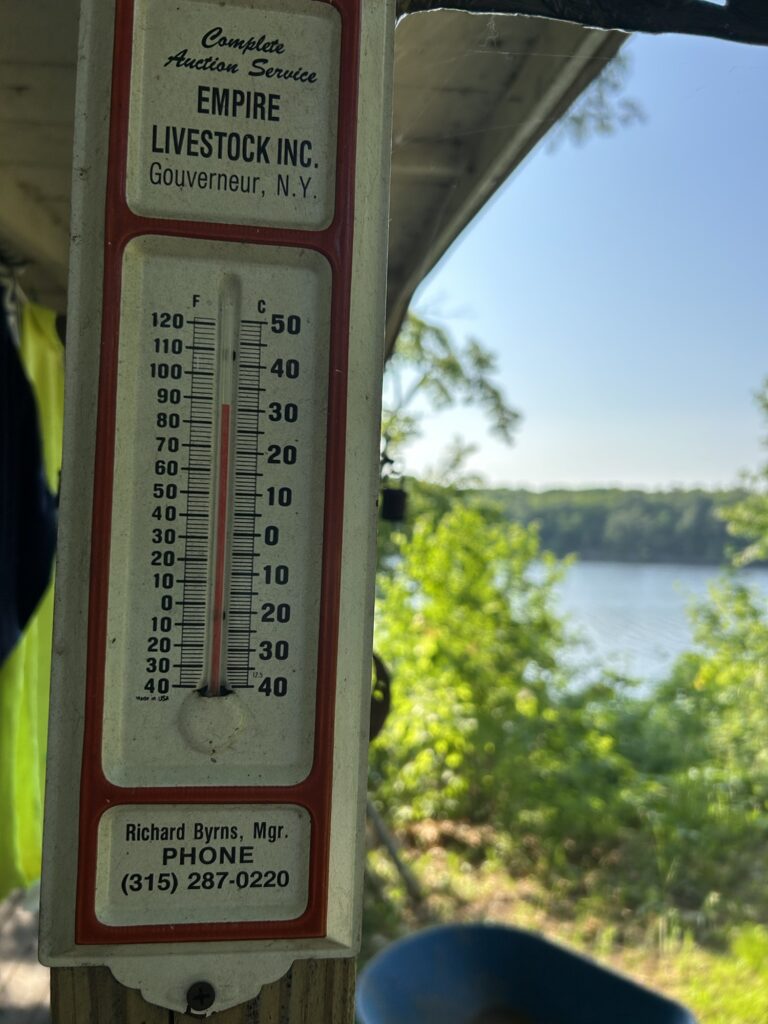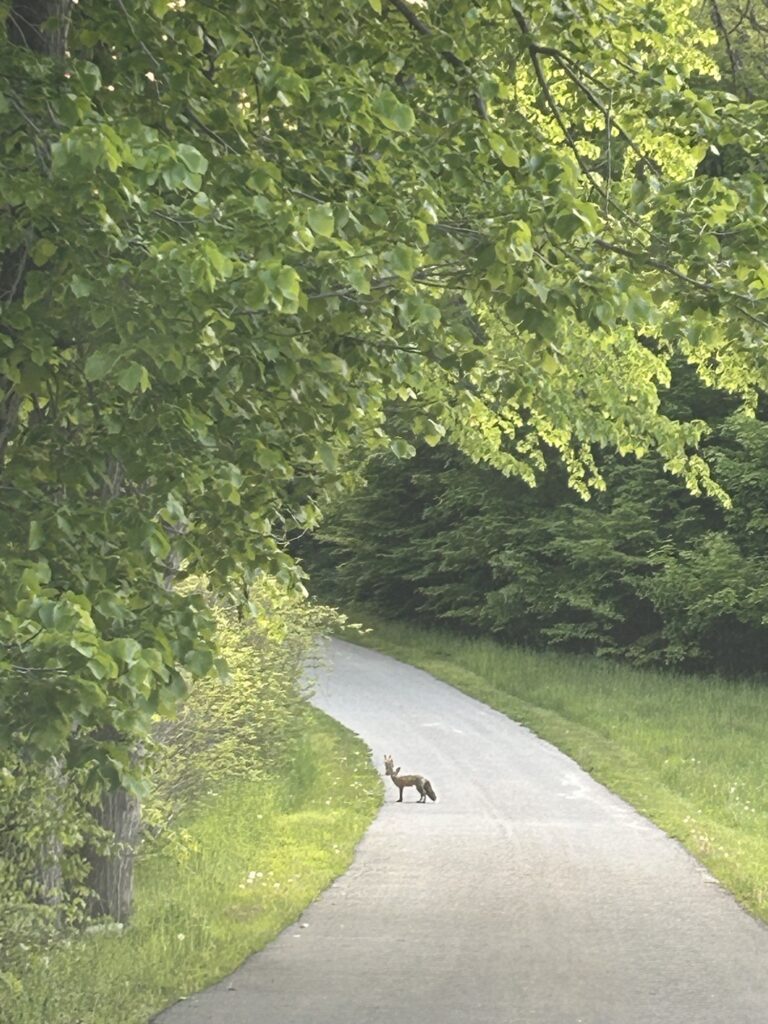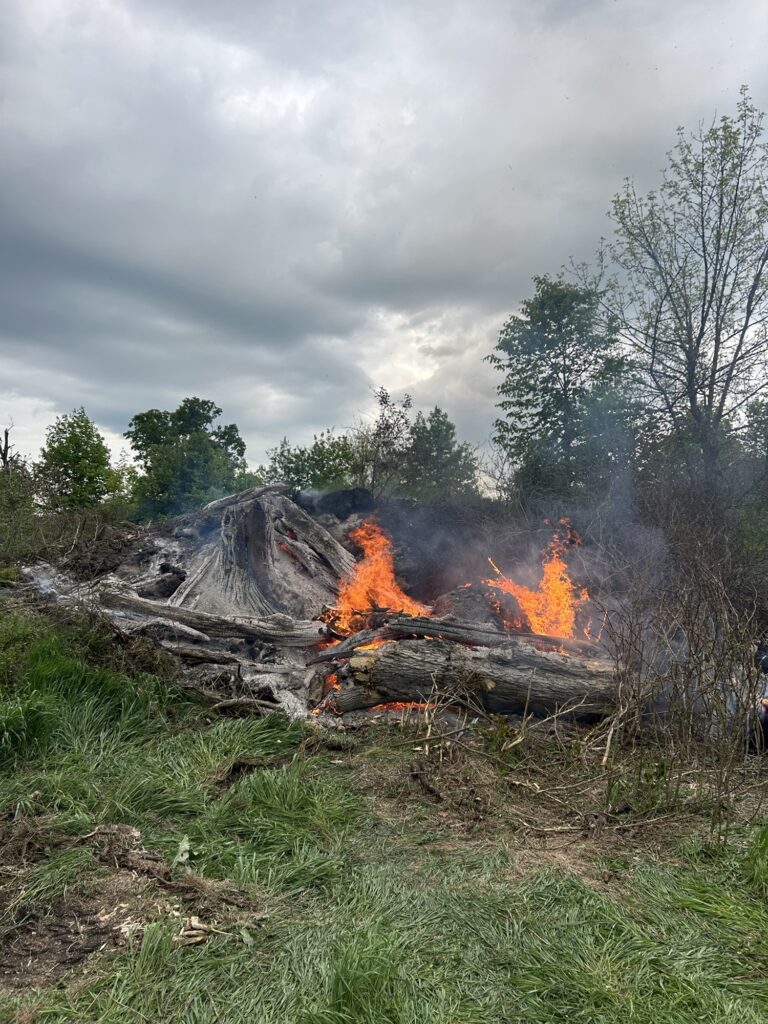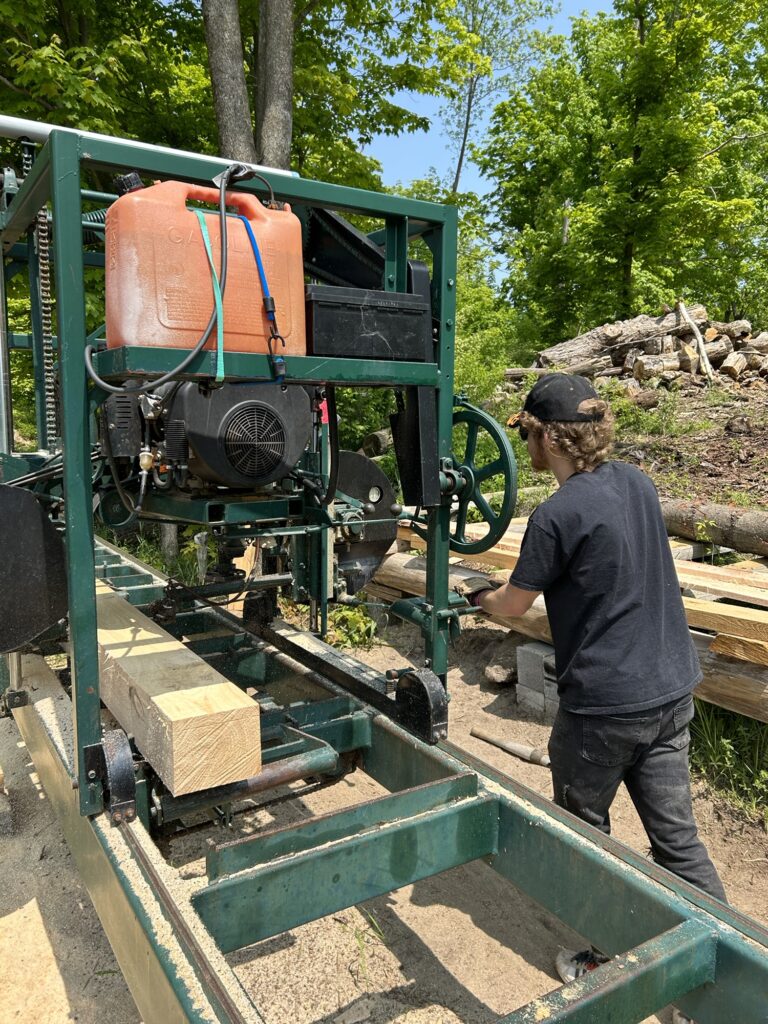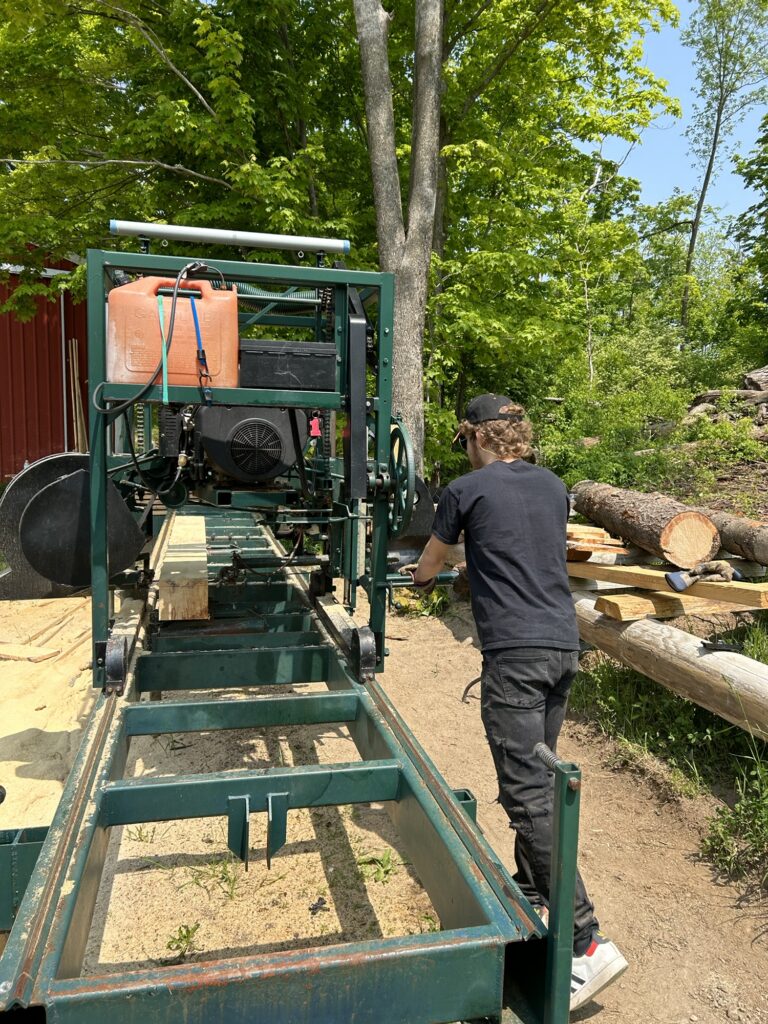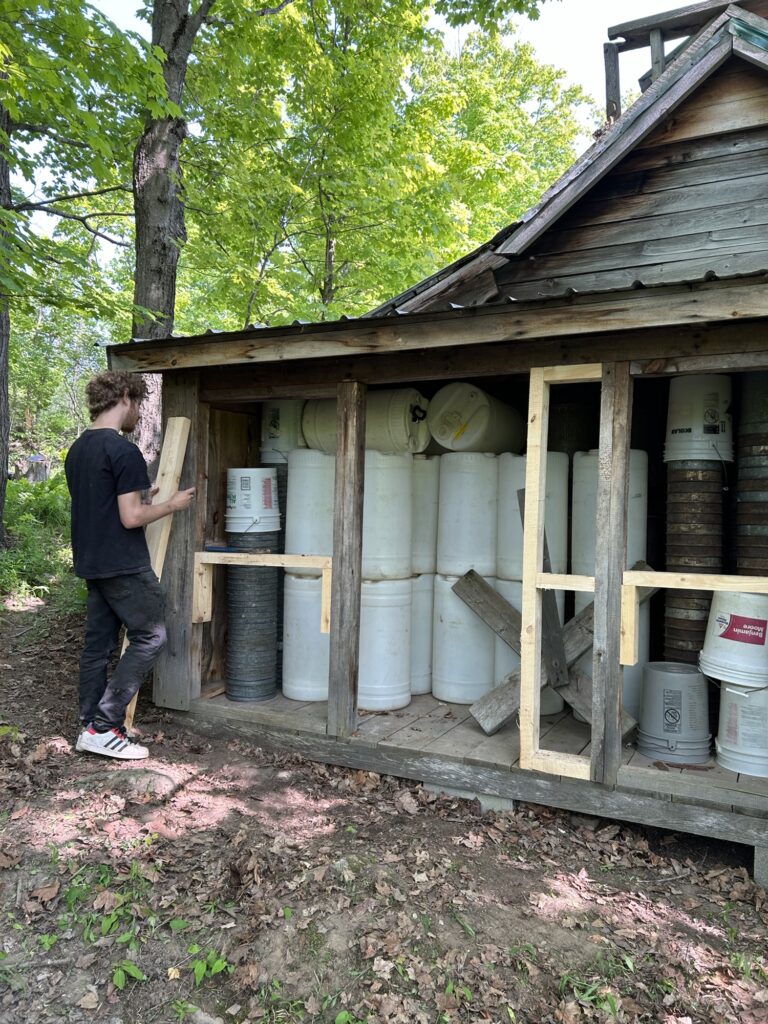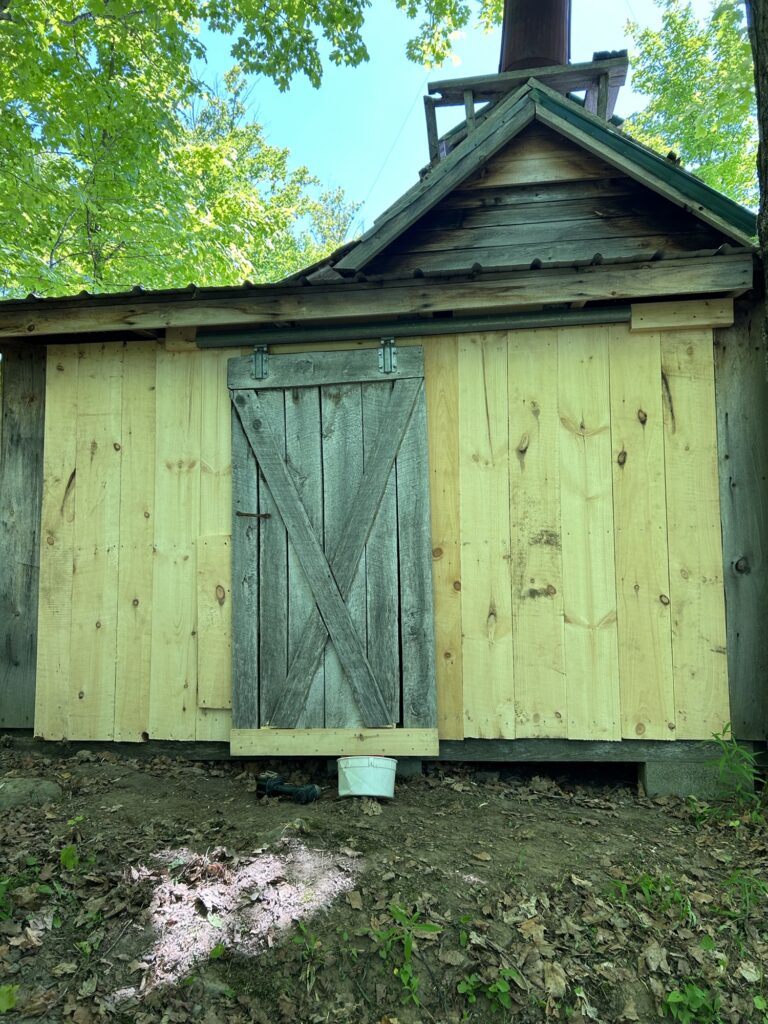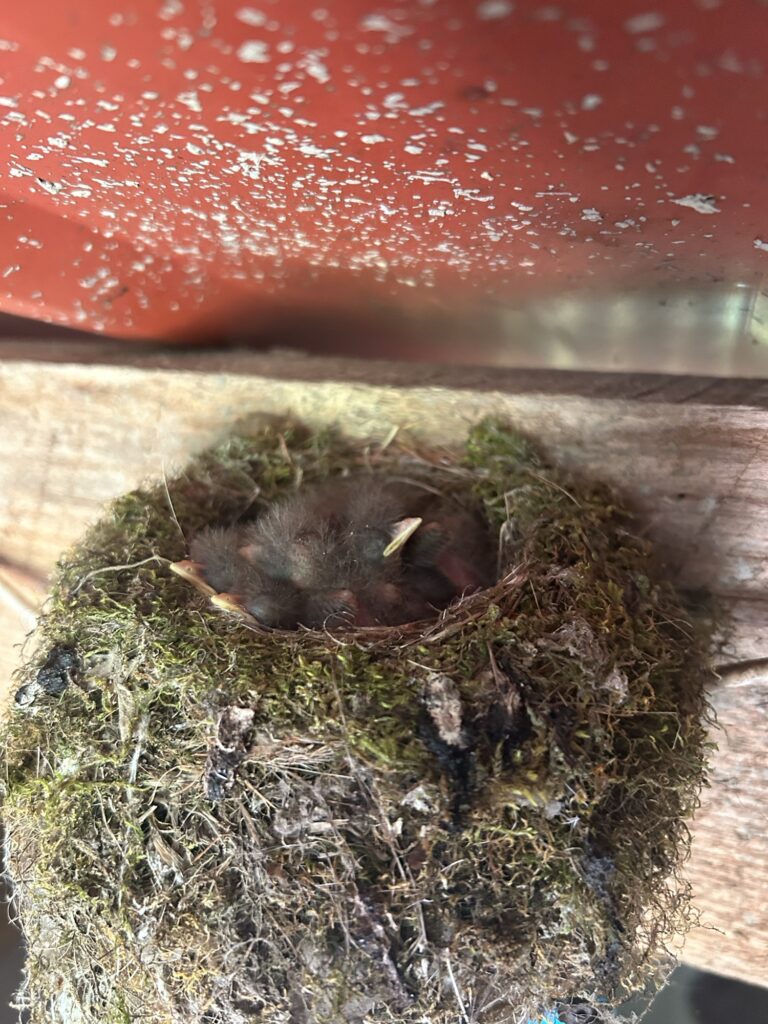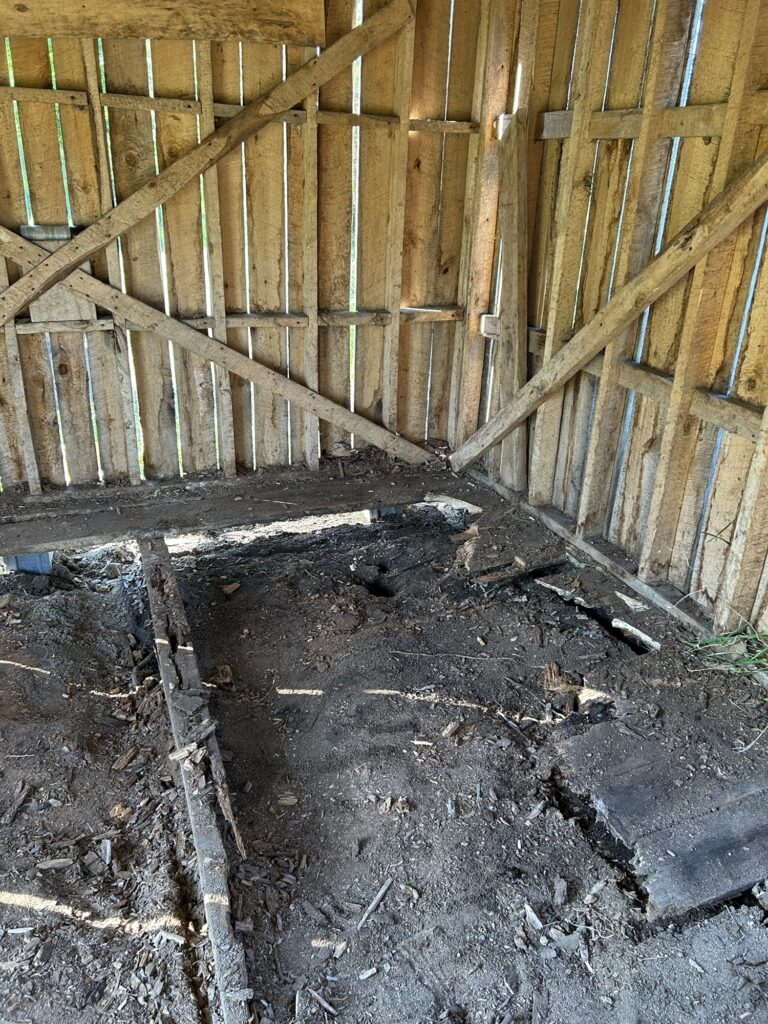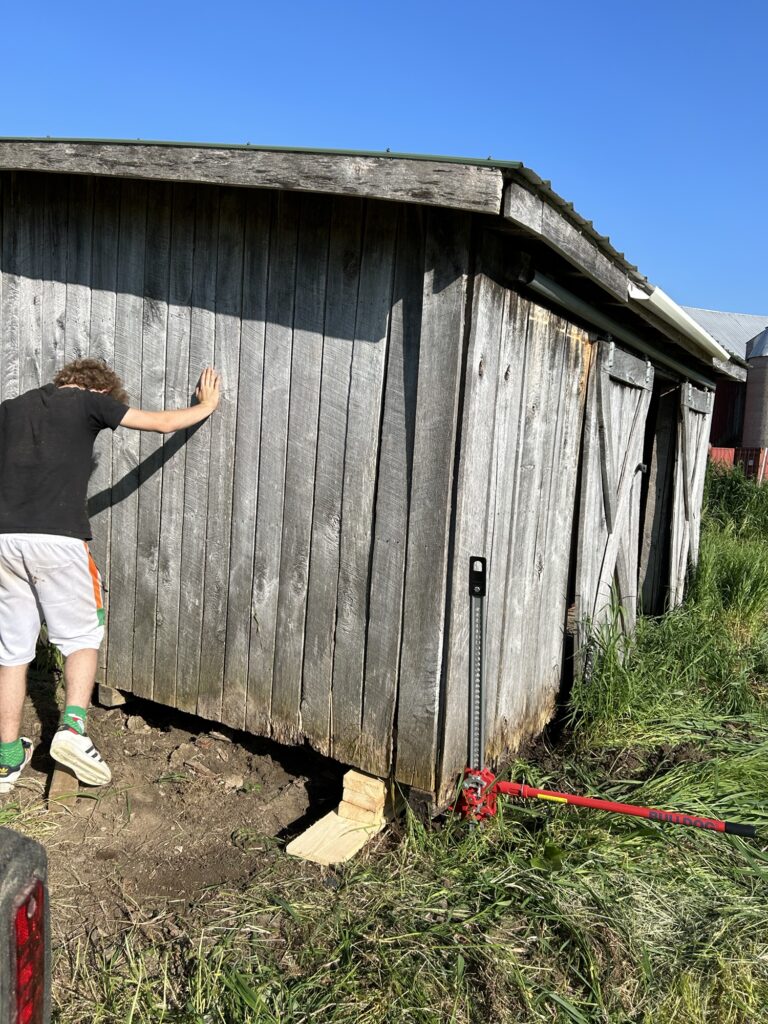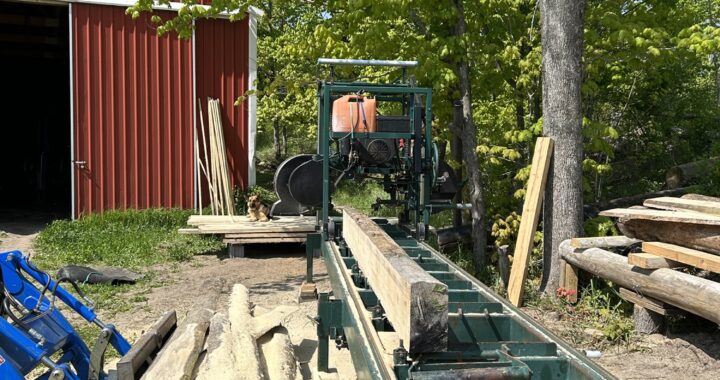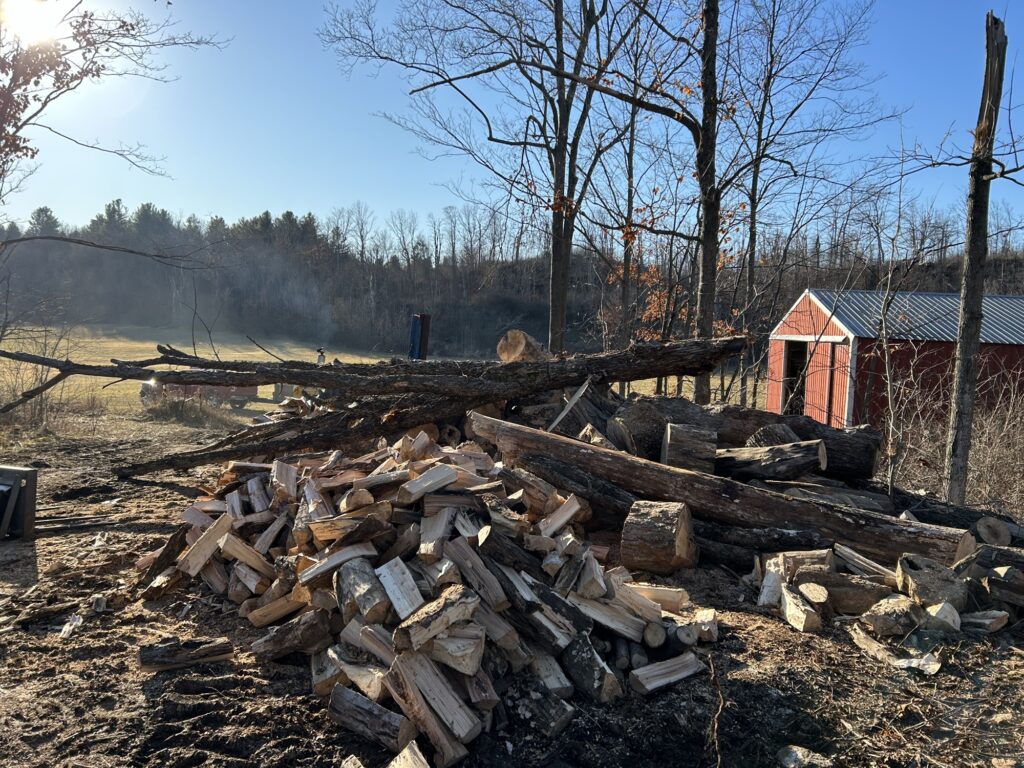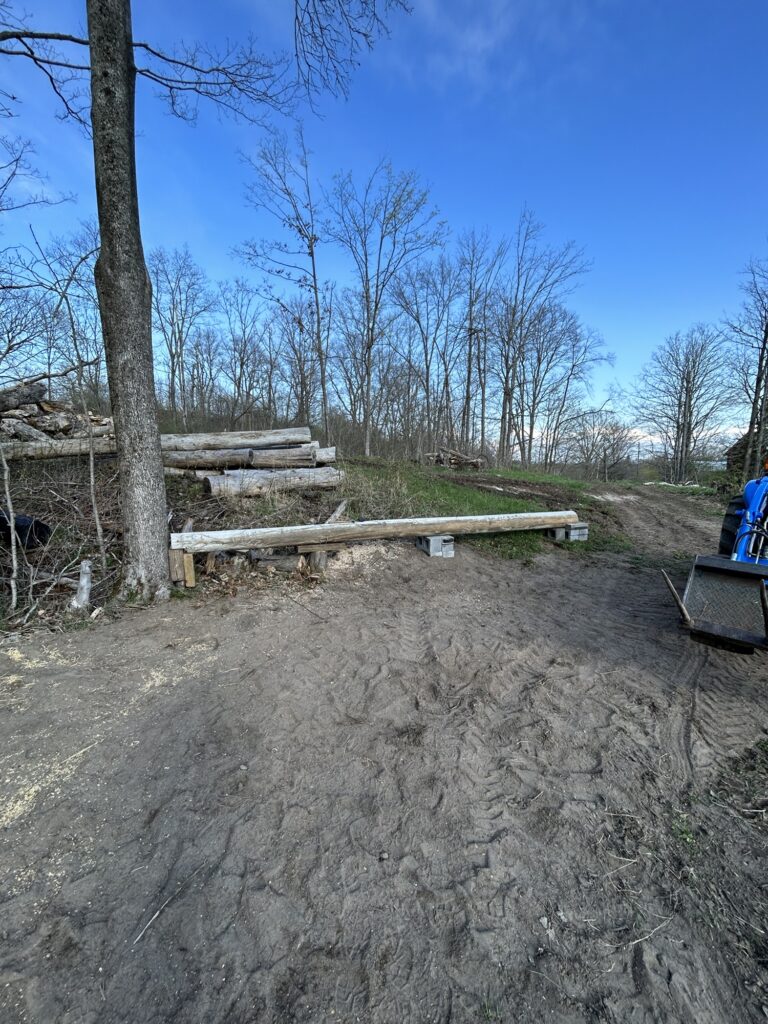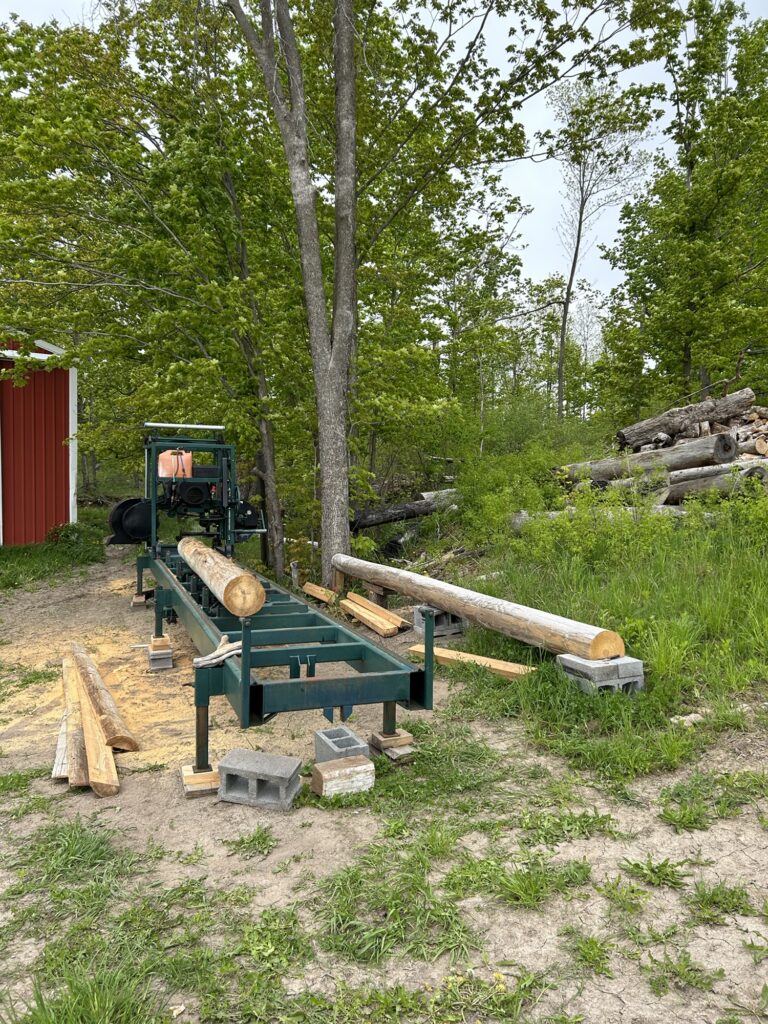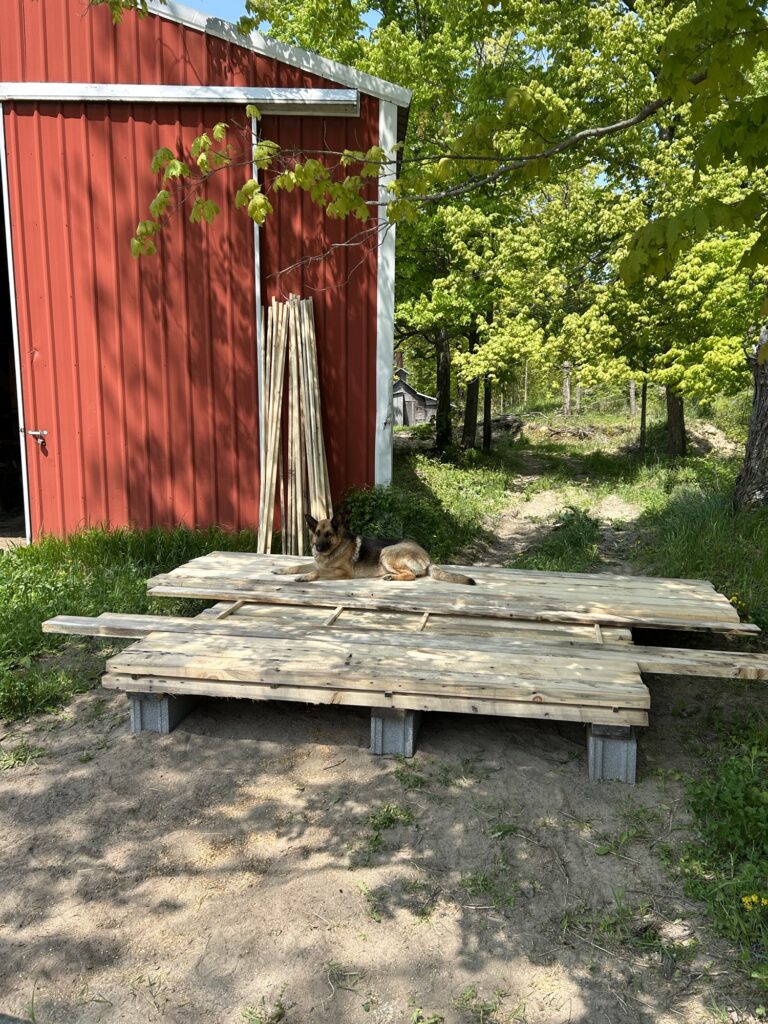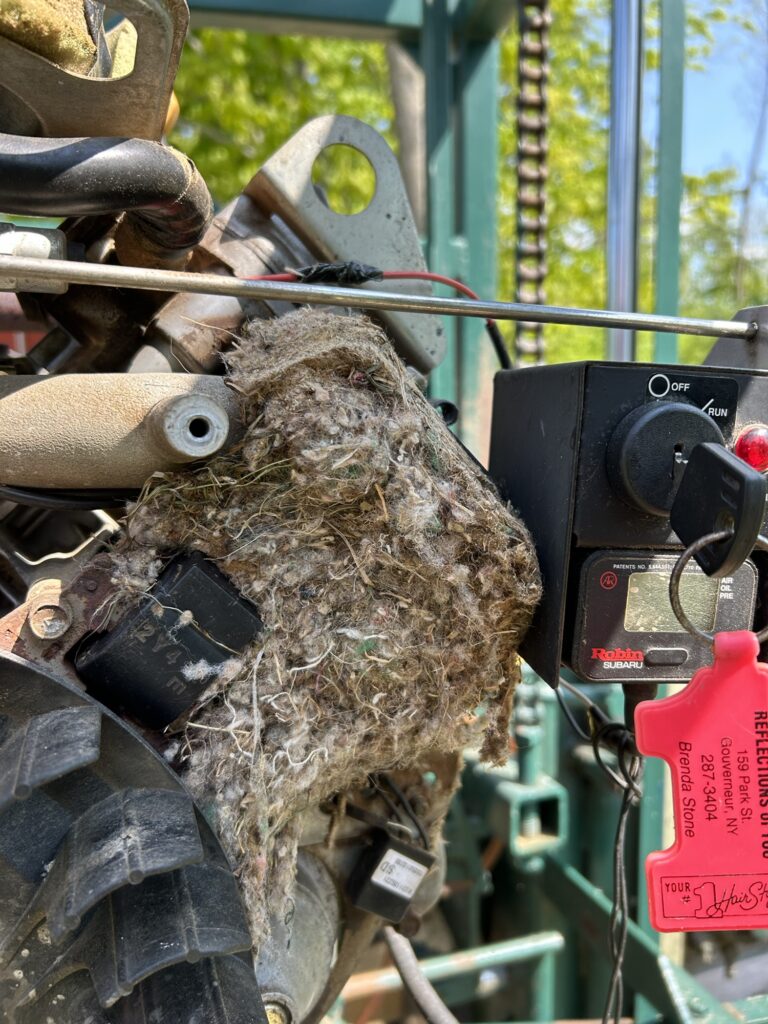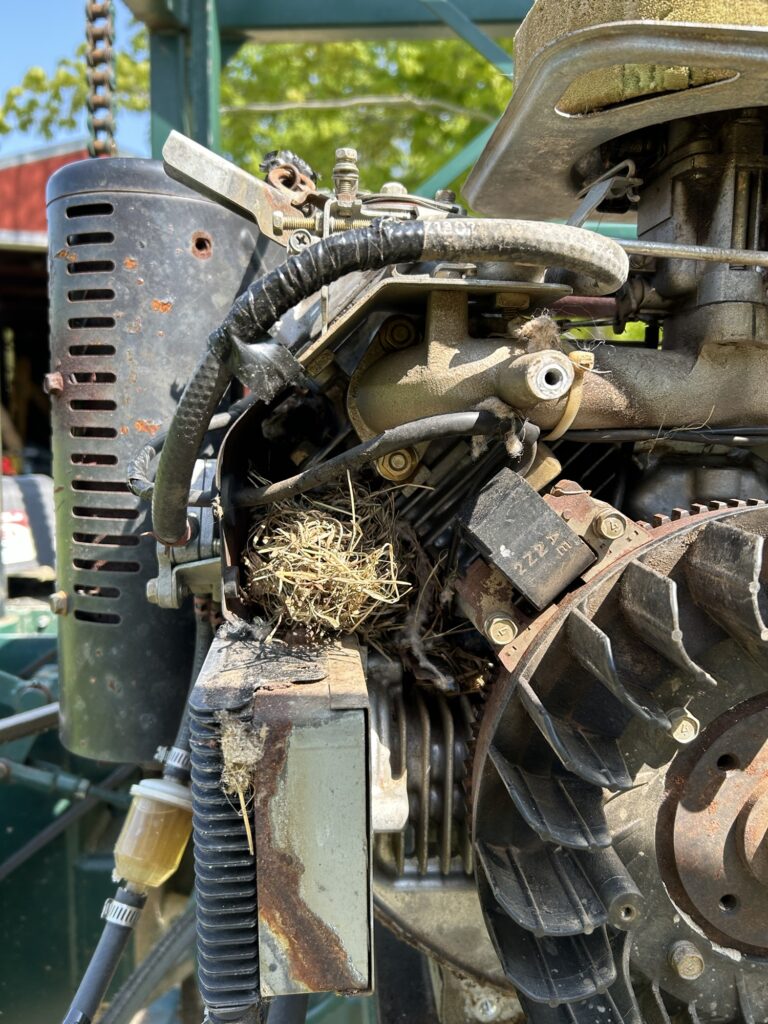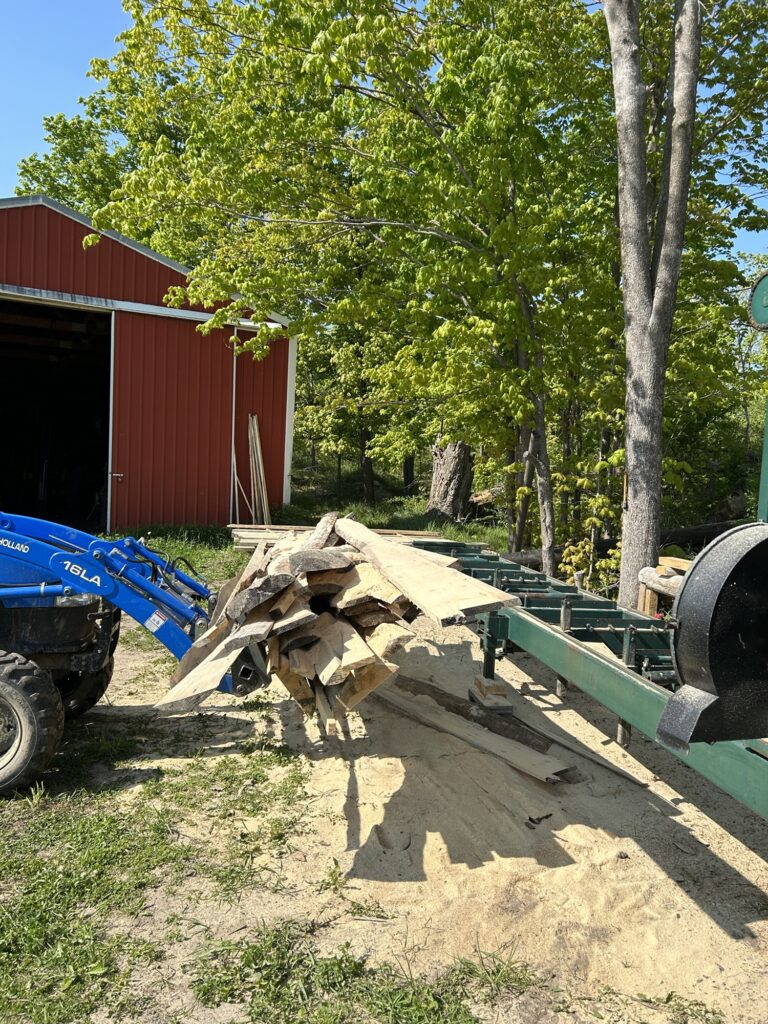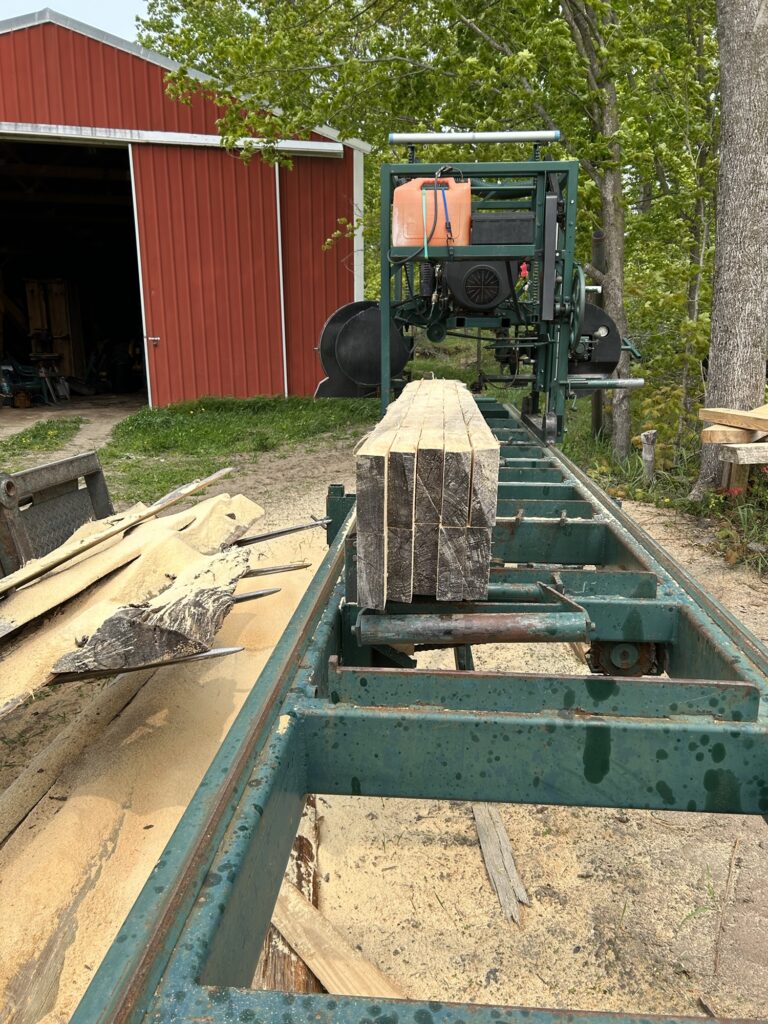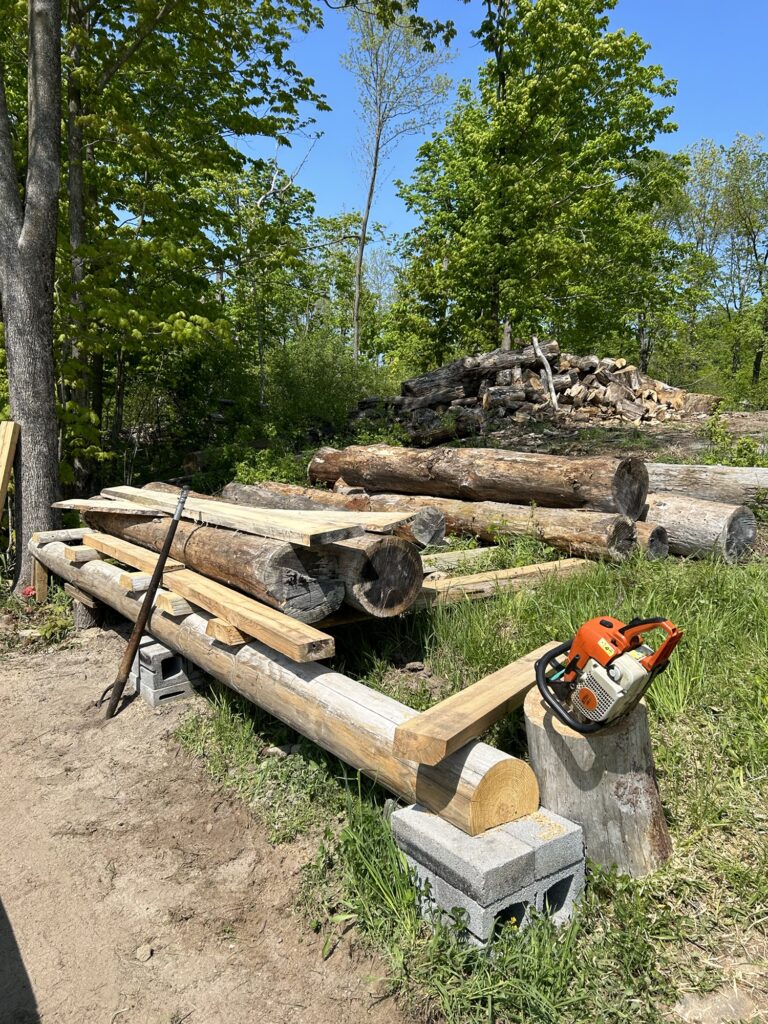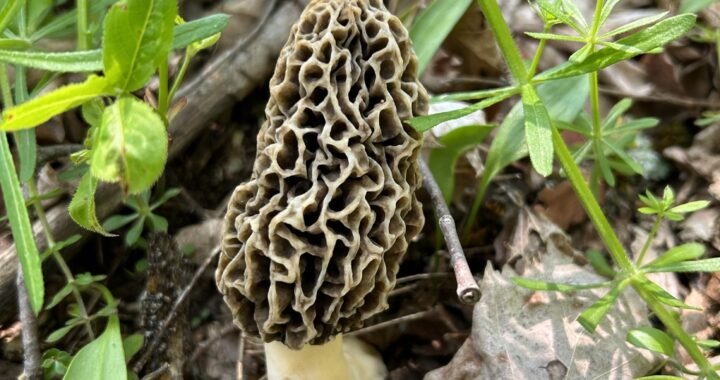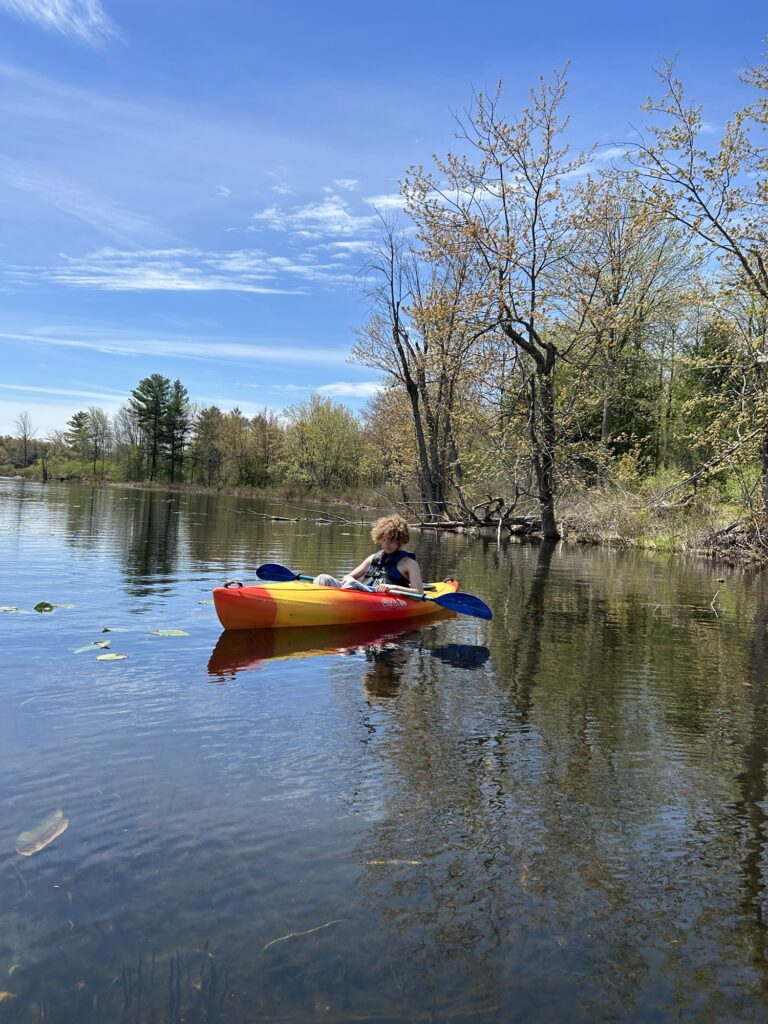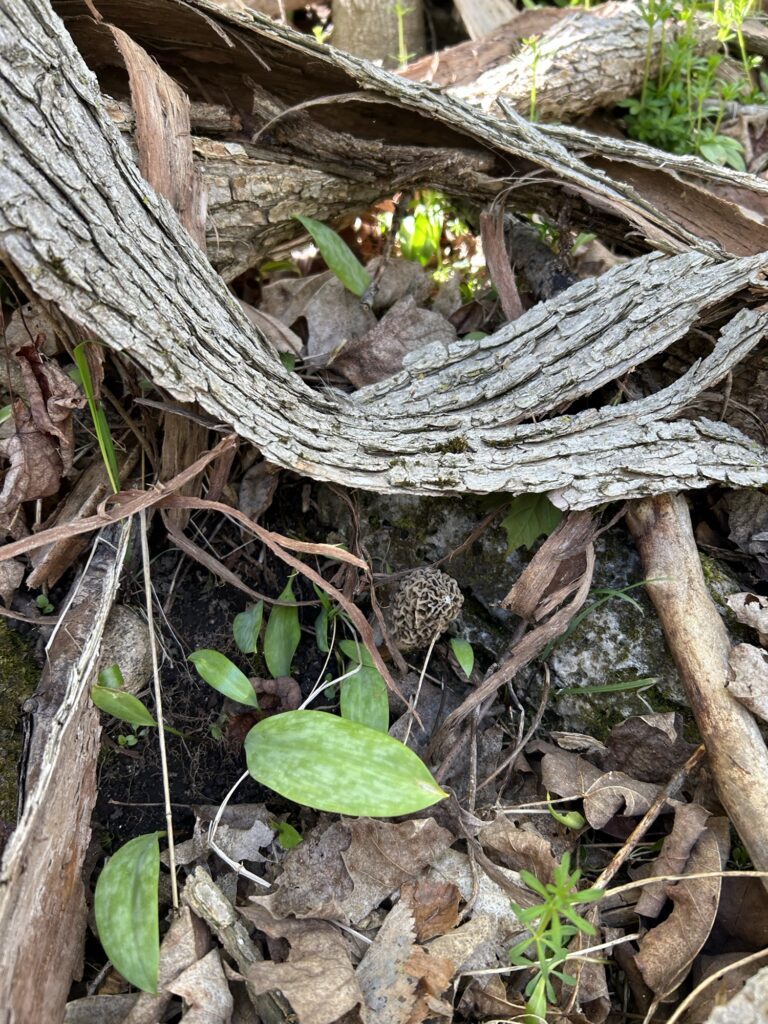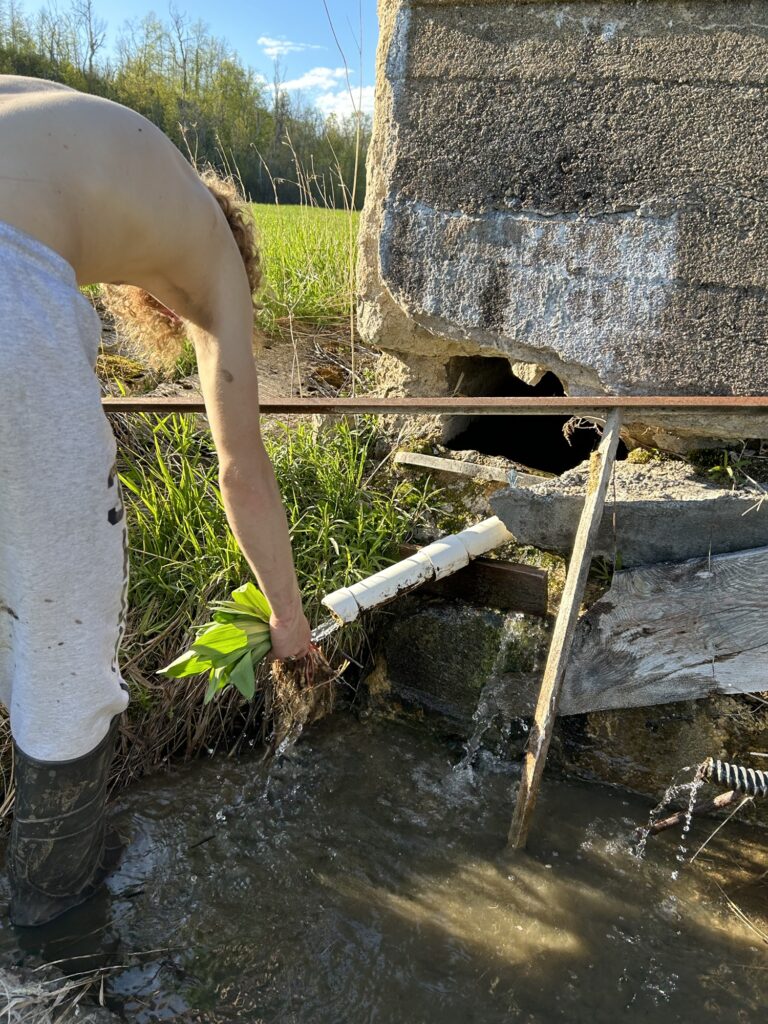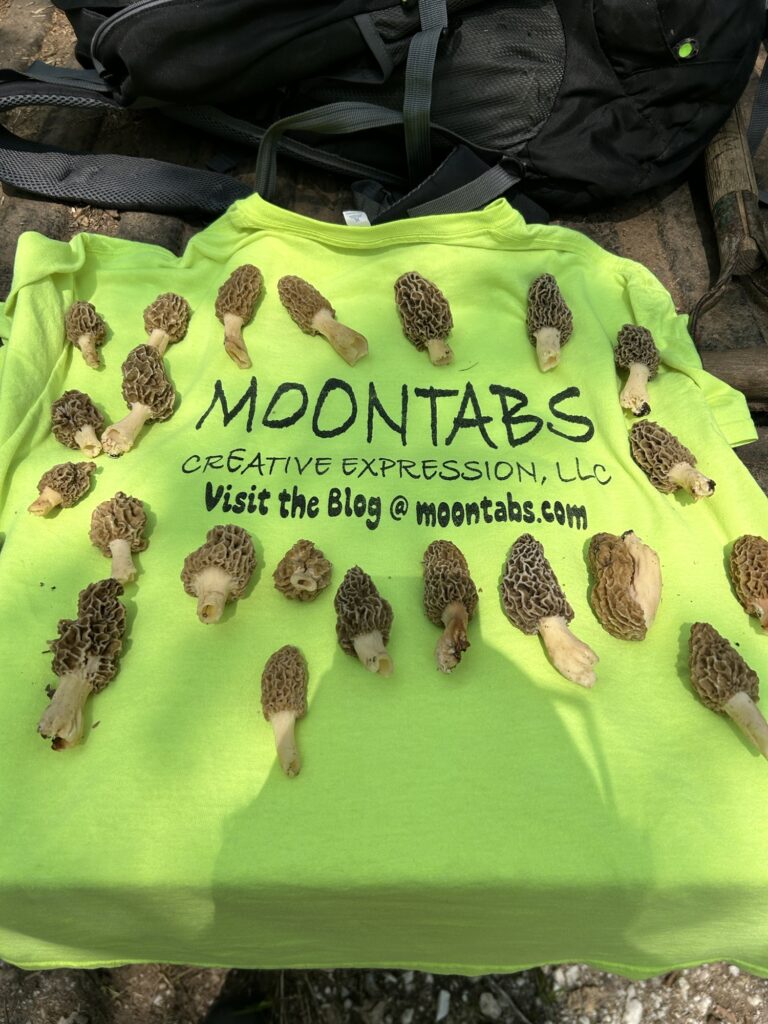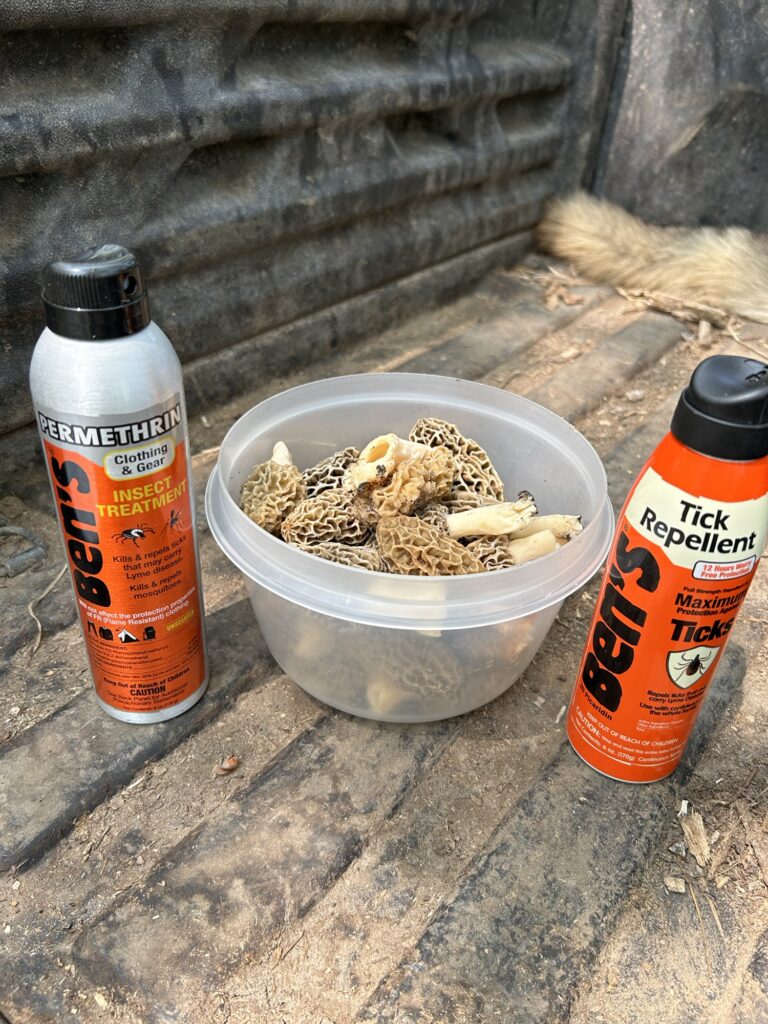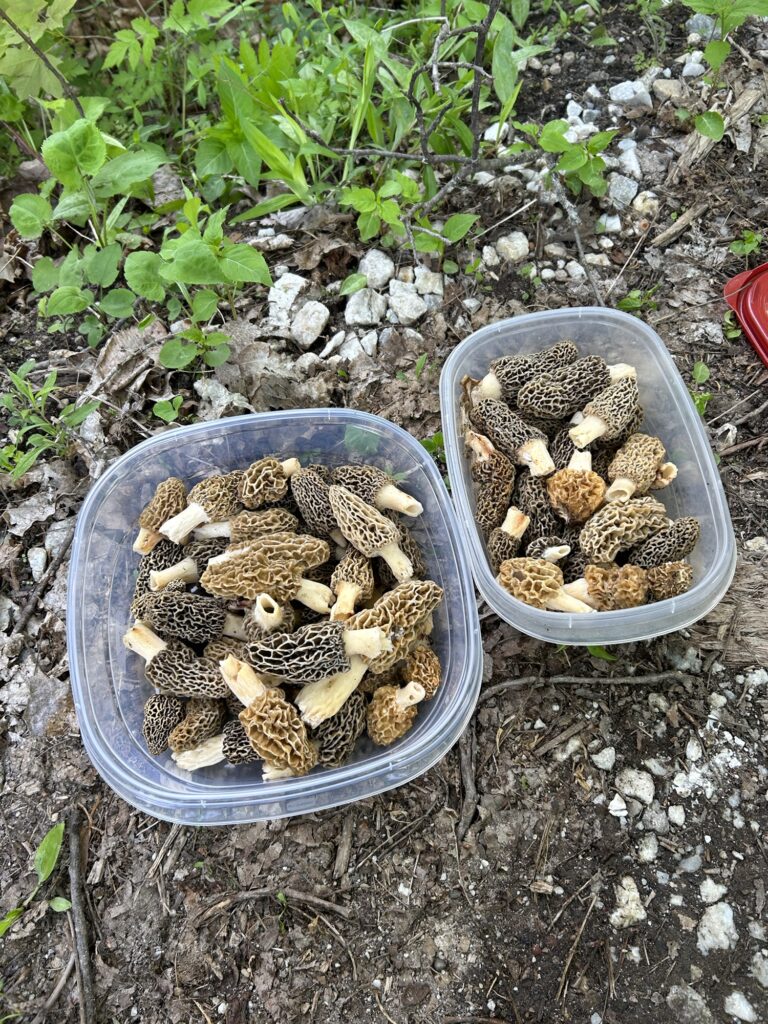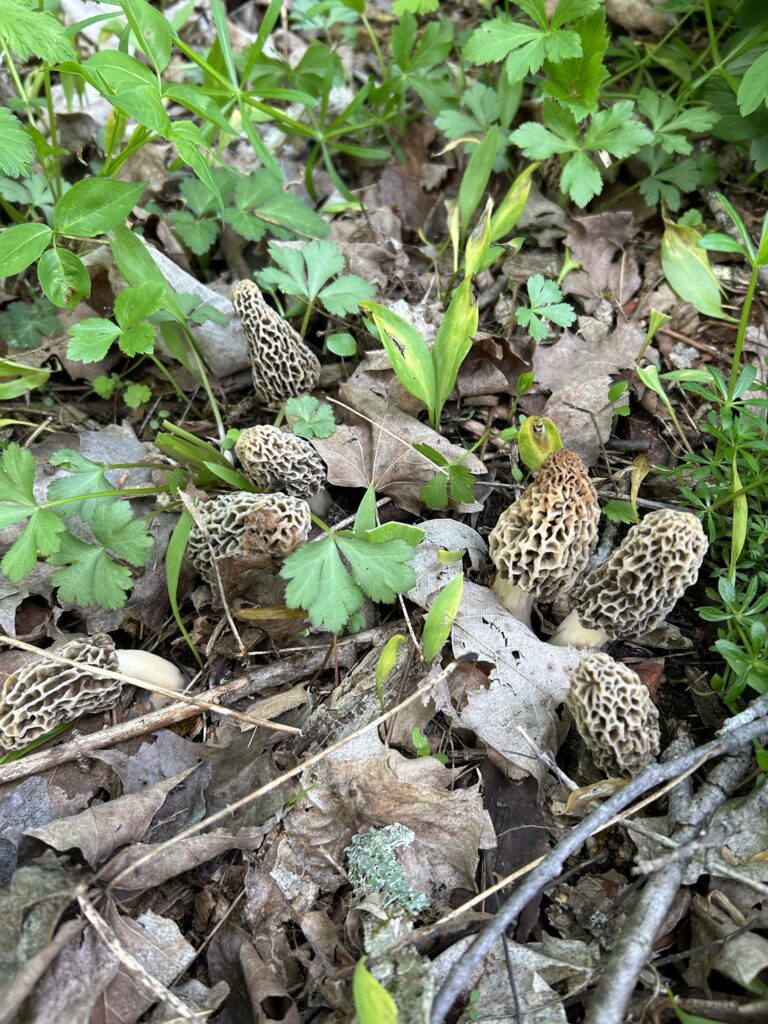What a strange winter so far! Mild weather continues and there’s been almost no snow. It’s been helpful getting cabin work done so that’s a positive! Things continue to move forward inside and each week shows more progress. We expect to put the Airstream away this week which will mean a transition into the cabin full time. It’s going to be a little bumpy at first but we’ll manage. The new wood stove finally showed up so that’s on the list for January. The loft was the focus last week and it’s well on its way to being finished. I am happy to report that the whitewashed ceiling was a success! I created a custom look with a combination of primer.paint, and water in equal proportions.
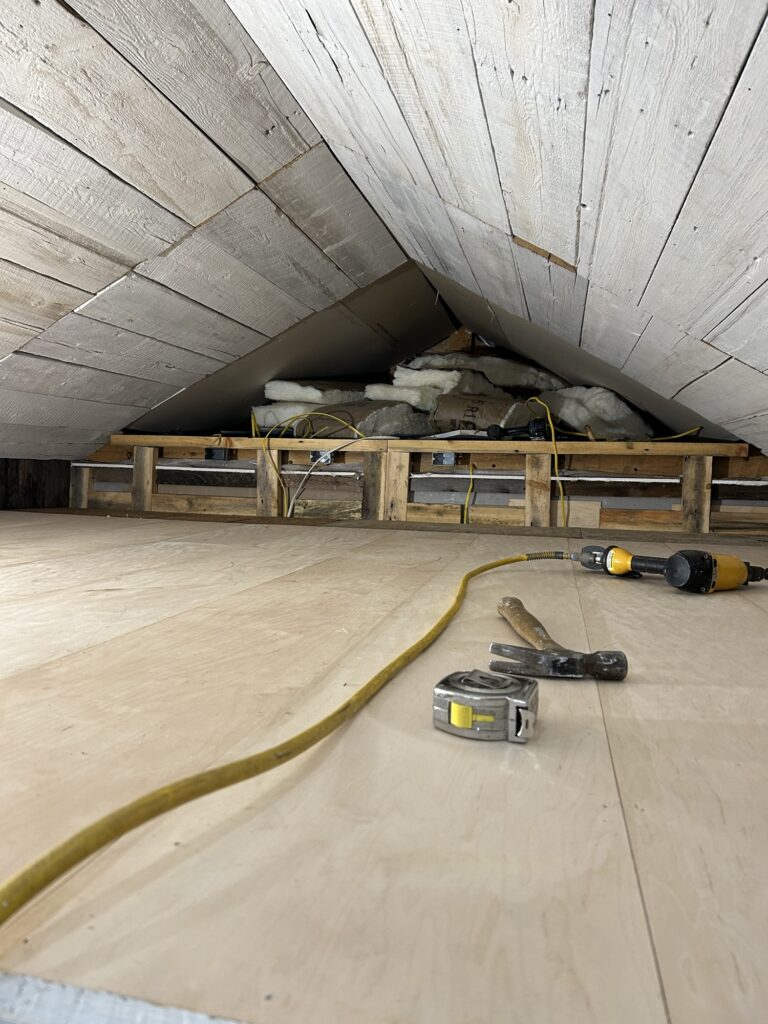
We enjoyed some leisure time over the holidays which was nice. On Xmas Eve Zane and I hiked up to the mountain to have a campfire on the Low Point. It was very cloudy and visibility was limited but we enjoyed ourselves until well after dark. We chose an old pine stump for our fire and it made a wonderful blaze. The pine resin smells incredible and the flames were a bright yellow. At times they were tinged with green. The old stumps are what remains of the former pine forests that once grew there. Forest fires destroyed them and burned so hot that large sections of bare rock are all that remained. The bare rock surfaces of the mountain have changed very little in my lifetime. They are a favorite place of mine to reflect on the passage of time. The solid rock remains a constant in my life journey story. That is the draw. From the high ground the lights of the farm twinkled in the distance. Home for us these days. Hiking to the mountain was a celebration of returning to the farm full time after an 11 year absence. Dinner was waiting in the crock pot for our return.
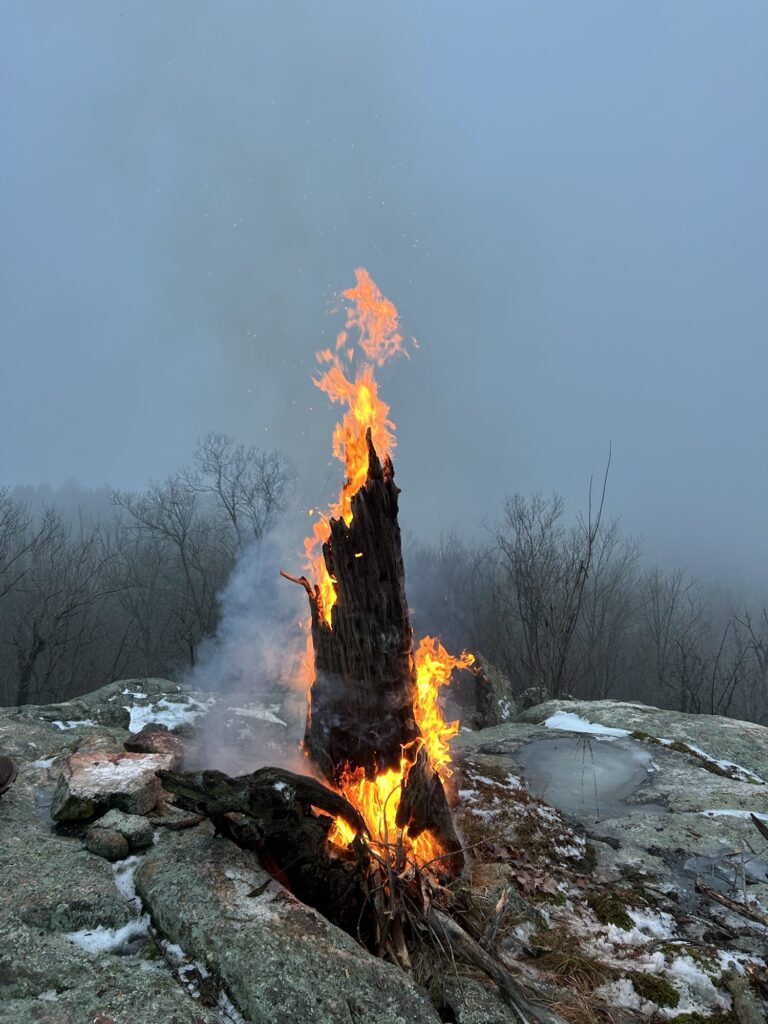
On Christmas Day I decided to fly my drone a little. It was the replacement of the one that had crashed in Quebec last August and I hadn’t even used it once. It was a totally calm day so flying conditions were ideal. I still have a lot to learn about piloting a drone but I did ok with it. Eventually I hope to take it up to 400 feet but for now I stay below 100 feet. It takes good photos that go right to my phone. It also can copy to an SD card if I prefer that option. I safely brought it to a landing when the battery began to run low.Mission accomplished!
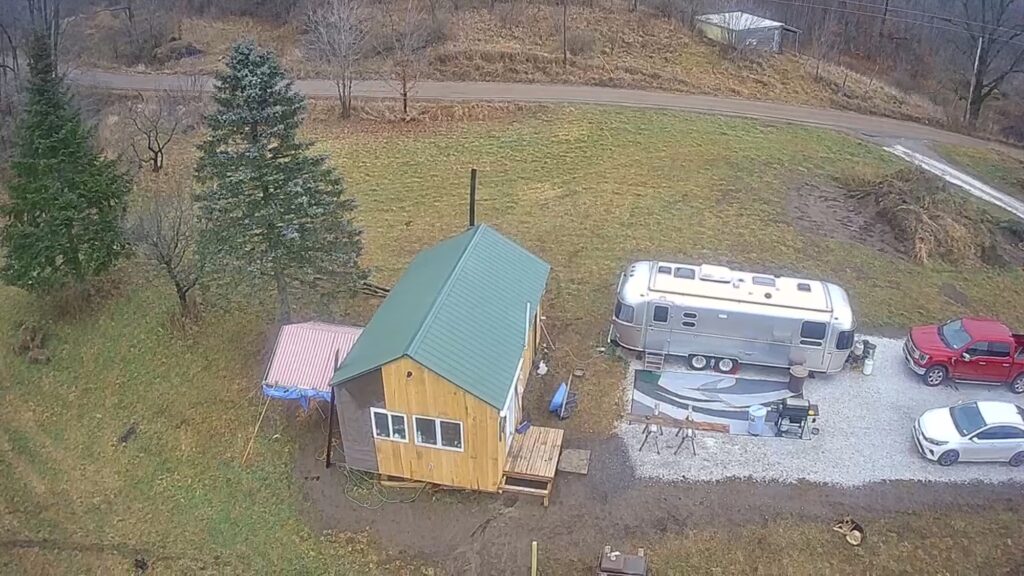
We fired up the sawmill recently and ran a monster log through. A 12’ salvage log from our neighbors at camp. One of those that was mentioned in my last post. It sawed out some beautiful boards and planks that will be used in the woodshed project at some point. It still needs a floor in one section. It will make a nice multipurpose building once we close it in more. The old Roundoak wood stove in the cabin will be repurposed to heat the woodshed eventually. But that project must wait for now.

I recently asked for a favor at a local restaurant where we hang sometimes. It’s called the Iron Horse Cafe and it’s one of the nicest places near us. Morristown isn’t a long drive for us and it’s easy for friends to meet us there. On their menu they had poutine and several different types of hamburgers. I asked the waitress if the kitchen would make me an “A La Poutine”. It’s a fully dressed hamburger smothered with gravy and poutine. They were willing to make it and it turned out pretty good. However their poutine is made with mozzarella cheese so I asked the owner if I could bring cheese curd for it the next time I ordered one. No problem he said! I first learned about A La Poutine in Quebec a couple years ago on our way home from our fishing trip. A local had suggested we try it! It’s a big entree and difficult to finish in one setting! I ordered several pounds of cheese curd from a producer in Clayton. The business is owned by the Bechaz family who uses milk from their own dairy farm to make the curds. It gets made on Thursdays so I made sure to grab it that same day! I took 2 lbs into the Iron Horse and gave one to the owner to try. The other went to the kitchen for my A La Poutine. It turned out fabulous! I couldn’t finish it so brought the rest home to share with Zane. I don’t know if the Iron Horse will ever have it on their menu but I do believe they will make it for us again sometime! Bechaz Riverdale cheese curd is the best I have ever tasted! I am getting hungry just thinking about it! I may try to make it myself sometime! It a hearty meal that just may be bad for my heart!Try it out for yourself!

So that’s pretty much it lately. Eating,drinking,and being merry to a degree.Lots of work on the cabin and lots of other miscellaneous details that come with life. As I reflect on the year just past I am amazed at how fast it seemed to go by. But it was a year of adventures and plenty of hard work. Each season brought many blessings to us. Good health and good fortune. Zane’s graduation was a big event as was his starting college. It wasn’t a big year for travel although our fishing trip to Quebec was epic! As was my 2 week Adirondack sojourn. I can say exactly when the cabin will be finished but it’s going to be awhile. There’s the remaining siding to complete and the remaining sections of the deck. I suppose I shouldn’t get so frustrated by the amount of time it’s taking. It’s a very custom build after all. Life is good here at the farm. It will be different not living in the camper but I won’t miss buying propane for the furnace. I am glad that I got good use out of the camper and have enjoyed it immensely.Perhaps I will travel with it in 2024. I am hoping someone will wish to join me but I am prepared to run solo if that’s necessary.
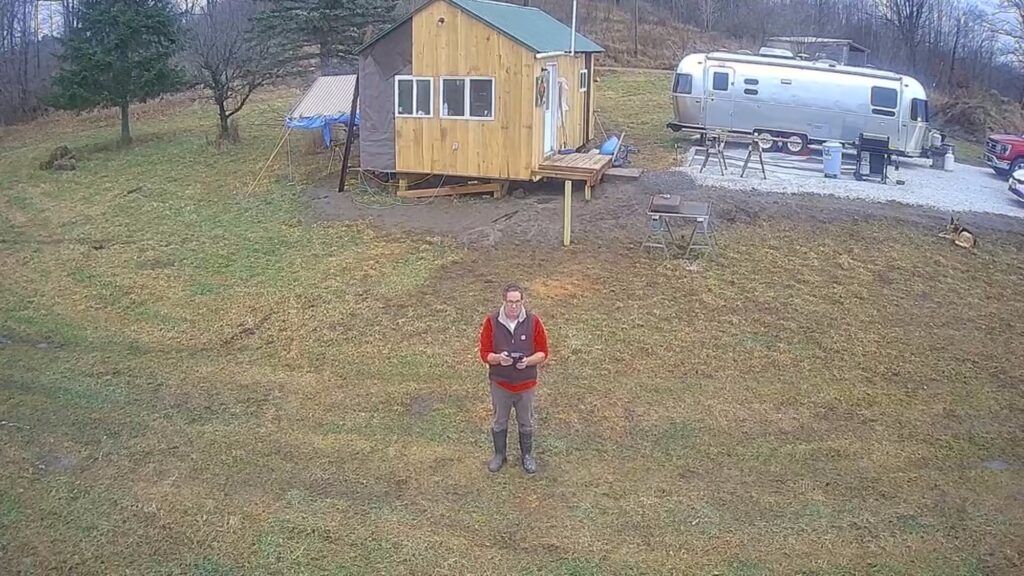
As for 2024 I am patiently waiting for the ice to form and the snow to fall for a return to ice walking. There’s an upcoming trip to California to kick off this year’s travel. As for maple syrup season I am not sure at the moment. We are seriously lacking firewood and there’s a few issues with the tractor. We will be returning to the Quebec bush in August once again. That reminds me that I never completed the bush living series I started! That’s ok as the photos will remind me of our special week and the memories will return like a film. My spirit energy will need a good battery charging soon that’s for sure. Each day starts with maple syrup infused coffee here at the farm. Life is good and the land grounds me with purpose and resolve. I can’t predict how tomorrow will turn out. All I can do is push forward and try to make good decisions. Writing will be a part of my 2024. That is a given. There are plenty of stories left to be told! MOONTABS await!✍️
